General Insurance Blogs, Articles & Updates by - Magma HDI
Have us call you
- RENEW YOUR POLICY
- BUY NEW POLICY

Group personal accident insurance is all you need to protect yourself against the financial distress of disabilities
Human resources are the greatest asset for any company. A good workforce can make or break a company. Companies often offer group personal accident insurance to protect their workforce from the loss of income from any kind of accident and related disability or death. The employees feel protected against financial uncertainties of work-related hazards with such insurance. It benefits employees working in heavy industries with dangerous machinery and surroundings.
Group personal accident insurance India is an effective way for employers to attract and retain talent. As an employee, it offers protection against the financial distress of disabilities and supplements your existing insurance covers. Let us know more about it.
1. Coverage:
Group personal accident insurance provides comprehensive coverage to an entire group against accidental disability and even death. Policies are customisable according to the number of people in the group and their specific needs. Hence, you can be reassured if your group is too large or small. Such policies provide discounts on a higher number of members in the group.
● Permanent total disability – Insurance companies will pay you the total sum insured in case of permanent total disability such as loss of leg, limb, eyesight, etc.
● Permanent partial disability –You are eligible to get up to 50% of the total sum insured in case of permanent partial disability, such as loss of one foot, loss of hearing, damage to eyesight, etc.
● Temporary total disability – You will get a certain percentage of the total sum insured in case of temporary total disability from an accident, depending upon your policy terms and conditions.
● Medical care – The policy will also cover your medical expenses, even if you are admitted for one day in a daycare treatment. Moreover, it will also cover your cost of OPD treatment, physiotherapy sessions, and ambulance transportation.
● Education – Some policies also come with an education add-on cover. The insurance company will take care of the education expenses of up to two dependent children in case of the insured person's death.
2. Need and importance:
Several industries require their employees to work on heavy machinery and risky surroundings, including the iron and steel industry, automobiles, pharmaceuticals, etc. A work-related accident can cause temporary or permanent disability, causing a financial crisis and a lot of trouble for the employees and their families.
So, if you are an industry employee, group personal accident insurance India covers you against such unfortunate accidents. It takes care of the hefty hospital bills for your treatment up to the limit of the policy amount. It also provides financial assistance to the nominee in case of the policy holder's demise.
Therefore, such a policy will give you peace of mind and protect you against the monetary distress of disability or death, allowing you to work stress-free with greater efficiency. It also helps build trust with your employer and strengthens professional ties for a long time.
3. Exclusions:
Group personal accident insurance India does not cover pre-existing diseases when purchasing the policy, self-inflicted injuries such as a suicide attempt, mental disorders, non-accidental medical treatments, hospitalisation due to substance abuse, criminal activities, or war. Ensure to read the terms and conditions of the policy to know more about the details. You may contact your employer or the insurance company if you've any queries regarding your coverage.
Group personal accident insurance India offers coverage that regular health insurance policy does not provide and also compensates the nominee with a lump sum payment in the unfortunate event of disability or death due to an accident. This can be a great financial support to your dependent family members.
Choose the best personal accident insurance India to provide complete coverage, support, and protection during the time of need.
Click HERE to buy personal accident insurance India policy.
Disclaimer: The information provided above is for illustrative purposes only. To get more details, please refer to policy wordings and prospectus before purchasing a policy.

Here are a few tips for skincare in older adults
Even if you've taken exceptional care of your skin throughout the years, it still ages. The youthful flush eventually disappears and the indications of ageing, such as brown spots, wrinkles, more frequent bruises, and dryness, start to be evident.
Your skin can convey your mood and show how healthy or unhealthy you are. As you age, taking care of your crucial outer self is important. For elders, here are some skincare suggestions.
Why does your skin alter as you age?
Skin changes brought on by ageing are typical and include a combination of the following:
● Allergies
● Weather
● Genetics
● Nutrition
● UV exposure
● Smoking is, among other things
The most harmful of these to the skin is continuous and direct exposure to the sun. According to research, among the people having skin illnesses, nearly 80% had one or more skin conditions requiring treatment or medical attention.
If you're an older adult, here are a few best skin care tips for you to enjoy a youthful and glowing skin.
1. Frequently moisturise your skin:
Emollients and fatty acids are combined in the best moisturisers to resemble the skin's natural lipids. Choosing an occlusive moisturiser can help you to build a barrier that will trap moisture in your skin and reduce water loss.
TIP: Always rub face moisturiser in upward strokes, never down. Apply a high-quality moisturiser to the skin after a bath to lock in moisture.
2. Wash gently:
With limited natural oil production, mature skin is extremely dry. Cleanse gently to prevent further drying out. It's okay to wash once per day. Use gentle cleaners as opposed to harsh soaps and alcohol-based products.
TIP: When washing, use warm water rather than hot and limit the number of baths or showers you take. If you enjoy unwinding in the tub, stay away from bath oils because they make the tub slippery and increase the chance of falling.
3. Eat right for gorgeous skin:
The saying "you are what you eat" has never been more accurate if you want skin that glows. Our skin's health is significantly influenced by our diet, which should be balanced and high in nutrients, vitamins, antioxidants, and necessary minerals. Include berries, melons, avocados, walnuts, oily seafood like salmon, and green vegetables. These items are a part of a healthy diet that can support maintaining healthy skin as you age.
4. Do maintain a simple, consistent routine:
Dermatologists advise simplifying skincare regimens. Irritation can result from excessive scrubbing, exfoliating, and product use.
TIP: As a general rule, use sunscreen, a cleanser, and a moisturiser, as these are the only three items that will make a consistent visible difference.
5. Avoid the sun:
This is the most crucial thing you can do for your skin! Dermatologists advise you to shield yourself from the sun's damaging rays.
● To protect your face and any other exposed skin, use a broad-spectrum, water-resistant sunscreen with an SPF of 30 or higher.
● When spending time outdoors, look for cover because the sun's rays are most intense between 10 a.m. and 3 p.m.
6. Drink water to rehydrate:
Never undervalue the importance of water or the benefits that staying hydrated may have on your skin and general well-being. Drinking water can give you radiant and clear skin.
Inner beauty begins with the skin. No matter how much money you spend on anti-aging therapies, poor health can manifest in your skin's appearance. Keep up a healthy lifestyle, and pursue your passions. After all, ageing is a natural process that includes wrinkles, fine lines, and age spots. Be proud to wear them!
Enjoy your retirement life with wholesome meals, daily and different exercise groups, and regular health and wellness events. Also, invest in the best health insurance in India for parents to secure your finances from uncapped medical expenses due to ageing.
Click HERE to buy the best health insurance in India for parents.
Disclaimer: The information provided above is for illustrative purposes only. To get more details, please refer to policy wordings and prospectus before purchasing a policy.
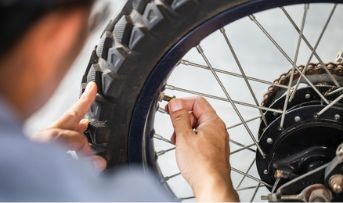
Get your tyres checked if you hear screeches regularly
The engine is often considered a two-wheeler's most crucial component. However, an experienced motorcyclist would tell you that well-maintained tyres are equally essential for a safe and enjoyable bike ride.
The various squeaks, screeches, and rumbles can tell you about a tyre's health. Since your contact with the road is made via tyres, they have a crucial role in defining your riding experience. Taking optimum care of your bike's tyres ensures longevity and a smooth ride. Buy 2 wheeler insurance online and get your bike serviced regularly to maintain your bike's safety.
Do tyres always make noise?
You cannot completely eliminate noise from your tyres. The rubber will make noise as it rolls against any surface. Natural rubber friction against the road will be the source of most of the noise your tyres make. Also, air flow through the moving tyre treads further increases the noise.
On the road, the sounds made by various tyre brands and products vary slightly. The sounds your tyres generate have a language, but translating them takes practice.
Let's now understand different screeches and how to care for them.
1. Squealing tyres:
The possibility of tyre squealing exists, especially while making sharp turns. You can hear this frequently in parking lots. Your front tyres may be underinflated if they appear to be making this squealing noise. You should check their pressure even if the tyres don't appear underinflated.
2. Squeaking tyres:
You need to pay immediate attention if your tyre makes a squeaking noise. Compared to a screech, it's riskier. The front tyres typically exhibit uneven tread wear, which a screech can indicate. You may feel some pulling to the left or right. Go to the tyre shop right away to have your wheels balanced, aligned, and tyres checked.
3. Grinding tyres:
The time to be afraid has come if you hear your wheels grinding. The most likely reason is your brakes' failure due to worn drums or pads. Get your two-wheeler inspected right away, wherever you are.
4. Rumbling and vibrating tyres:
Your tyres may rattle and tremble on some road surfaces, particularly ribbed ones. A worn wheel bearing may be indicated by rumbling and vibration from your tyres, especially if the noise gets louder as you go faster. It is a significant cause for worry since the wheel bearing holds the wheel in place.
Whether you are turning swiftly or braking hard to halt quickly, screeching tyres are to be expected. Low tread depth may be the issue, which you can resolve by taking your 2-wheeler to a tyre shop.
Dealing with unidentifiable sounds:
Sometimes you instinctively know something isn't right after riding on a pair of tyres for a while. When you hear a noise, you might not be able to place it in a certain category or even identify it, but you get the impression that it doesn't sound right. This might even happen if you stumble over a pothole. Other reasons might be the low tyre pressure, the tread may have worn down, or your bike's wheel may have fallen out of alignment.
Remember to pay attention to tyre sounds. Take a conservative approach if you are unsure of what it signifies. Check the two-wheeler and the tyres. Safety is the utmost priority for any rider on the road. The easiest way to prevent mishaps is to pay attention to your bike, regularly get it serviced, and purchase 2 wheeler insurance online as a prudent safety cover.
Click HERE to buy 2 wheeler insurance online.
Disclaimer: The information provided above is for illustrative purposes only. To get more details, please refer to policy wordings and prospectus before purchasing a policy.

Here are a few home remedies to treat psoriasis
Your body is a temple, and you must take care of it to ensure your physical, mental, and emotional well-being. However, certain conditions can take longer to cure, and their development or progression varies from person to person. One such condition is psoriasis.
If you are new to this term, let us explain psoriasis. It is a disease of the skin, which manifests itself by creating a rash with itchy and scaly spots and patches, usually on the elbows, knees, scalp, and trunk of your body. This inflammation in the skin caused by psoriasis is an autoimmune condition, and there is no single method to treat it. As every instance of psoriasis differs from the next, the treatment prescribed by dermatologists also differs.
This blog will shed more light on these treatments and the few home remedies to treat psoriasis.
1. Aloe vera to the rescue:
Aloe vera is believed to be very beneficial for managing your psoriasis and calming the inflammation of your skin. And the best part? It is readily available and hassle-free if you want to grow aloe vera in your home premises organically. If you are using aloe-vera infused creams, it is medically recommended that you use the ones with 0.5% aloe vera and apply it three times a day to treat the discolouration, rash, itching, and scales on your skin.
2. Warm water to cleanse:
Who doesn't like warm water baths? The soothing water at the right temperature falls on your skin, relaxing your body. But there is a disclaimer! You must strictly avoid "hot" water. It might not be helpful with the inflammation of the skin due to your psoriasis condition. Warm water is advised. You can add mineral oil, Epsom salt, or olive oil to help with the rashes and itchiness.
But you must be careful about specific things to avoid triggering or worsening your symptoms. Some instructions include: showering once a day, a maximum of fifteen-minute bath, using a soft, moisturising soap bar, patting dry, and applying a skin-friendly moisturiser post-shower.
3. The household's favourite – turmeric:
Every Indian household's favourite ingredient for cooking or home remedies is turmeric. There have been many studies on the usage of turmeric and its benefits which have suggested fruitful results in using this age-old home remedy in Indian culture. Turmeric has anti-inflammatory abilities, which help rid psoriasis.
4. Omega-3 is essential:
Omega-3 is an essential component that helps to strengthen your body's immunity, prevents heart diseases, reduces the chances of stroke, acts as protection against cancer, and much more. The omega-3 fatty acids are believed to lower the inflammation levels of the skin in your body.
Other ways to help you manage your psoriasis include keeping your stress levels in check by meditating, journaling, aromatherapy, anxiety management (therapy), etc. It is also advised to monitor your body weight and control it if necessary. Living with psoriasis compromises your immune system, which makes you prone to other health issues. Therefore, maintaining a moderate body weight is essential.
It's high time that we all understand the significance of our health, especially after the pandemic. While you try your best to stay in optimal health, you must be ready for any health crisis that might come without warning. Therefore, you must get online health insurance to avoid such unforeseeable situations. Explore your options and purchase the best online health insurance that caters to your needs.
Click HERE to learn more about online health insurance.
Disclaimer: The information provided above is for illustrative purposes only. To get more details, please refer to policy wordings and prospectus before purchasing a policy.

Complete guide to become a professional driver
Driving a car can be one of the most joyous and liberating feelings in the world. Cruising through the roads, being in control and manoeuvring your vehicle is sure to give you a sense of euphoria. While many of us master the art of driving effortlessly within a short period, others might take a considerable amount. The important thing to remember is that developing driving skills is a matter of experience.
In this article, we will discuss a few ways to develop your driving abilities and become a skilled driver.
1. Understanding how your car works:
An expert driver should be able to manoeuvre every car. But as a start, before you can take your vehicle out, understand its mechanisms and how it responds to adverse weather conditions. This will help you manage your car better if presented with any circumstance that you have had no prior experience with.
2. Configure the mirrors:
Mirrors should perform their intended functions. Knowing what mirror angle works best for you is crucial. Set your mirrors so that the sides of the chassis are not visible anymore. Upon setting up the mirrors the right way, you can reduce the blind spots significantly.
3. Turn signals:
Many people often neglect to use the indicators. However, it is vital to understand that the turn signals are not for you. They alert other people behind or around you about your next move. Warning others will help reduce accidents or crashes on the road.
4. Keep a margin:
This might seem futile when you are traversing through slow-moving and congested traffic. However, leaving a margin between your vehicle and the vehicle ahead is necessary when you are driving fast on an empty road. This helps avoid potential crashes in case of a sudden brake by the person ahead of you. A thumb rule to follow is the 10-second rule. Keep a checkpoint for reference and note the time the vehicle ahead of you passes this point. Ensure that your vehicle follows with a gap of 10 seconds.
5. Be responsible towards others:
When talking about good driving skills, one of the most neglected factors is the responsibility towards others. Being empathetic towards others on the road is the trademark of a good driver. Unnecessary honking, not adhering to speed limits, not warning the other drivers, etc., can lead to agitation and even accidents. Being calm during such situations can go a long way.
6. Practice night driving:
Traversing through night traffic can be challenging the first few times. Instead of taking your car at night during heavy traffic hours, start practising on relatively empty roads to get comfortable with the headlights from the opposite vehicles. Understand the rules of alerting fellow drivers during the night and stick to them.
These are a few ways in which you can improve your driving skills. Being confident and practising adds to your experience and makes you a better driver. As a beginner, handling a 3000-pound motor can seem daunting. Keep in mind that being intimidated is entirely normal. Start with open grounds and slowly make your way into heavy traffic roads.
Another thing to consider is that sometimes, accidents might happen due to the negligence of fellow drivers or some unexpected situations. To help you rest easy, consider buying motor and personal accident insurance. Personal accident insurance covers all the expenses you will face in case of an accident and compensates for your losses.
Click HERE to know more about personal accident insurance India.
Disclaimer: The information provided above is for illustrative purposes only. To get more details, please refer to policy wordings and prospectus before purchasing a policy.
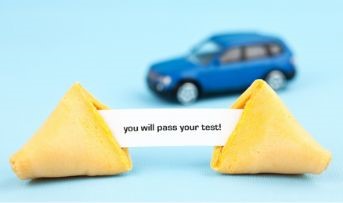
Best tips to overcome your driving test nerves
While buying a car is hectic and time-consuming, learning how to drive a vehicle is a different ball game. We all know that Indian roads are chaotic, and sadly, the strict implementation of traffic rules is lacking. People are ignorant of the traffic rules. The high number of vehicles on the road makes it difficult for the traffic police to control the cars and catch the ones breaking the regulations, thus encouraging the environment of neglect. New learners find it challenging to navigate the roads under such conditions and risk a massive chance of landing in or creating an accident or collision with other vehicles, poles, and bumpers if they are not extremely vigilant.
Considering the above reasons, it is imperative for any potential learner or driver must pass a driving test with good scores or grades to show their understanding and make them eligible for driving on the road.
This driving test examines a candidate based on a written and practical test. Both these tests are focused on your knowledge of the traffic rules and road conditions, situational risks and solutions to avoid any accidents, and a practical display of your driving skills catering to the tasks given by your examiner. This driving test is extensive and essential, which is why many test takers get nervous before the test.
Are you someone who gets the pre-exam jitters that makes you anxious about the upcoming test and interview? Well, do not worry. This blog has the best tips to overcome your driving test nerves. Here are a few tips to get you started.
1. Confidence is key:
It would be best if you assured yourself that you are ready. You have studied well for the test and practised your driving skills enough times to be confident that you will pass your test with flying colours. You need to be satisfied that you will not be able to take this test until and unless your driving instructor thinks you are ready. So, if you are applying for this examination, you must avoid hyping up the test and magnifying its importance to make yourself anxious. This test will examine your skills in something you have done many times already.
2. Do not tell everyone:
Avoid telling everyone that you are about to take your driving test. Keeping it a secret will help you avoid the millions of tips and techniques people will say to you, and various negative reviews you might come across will make you more nervous and break your confidence. Losing confidence is not something you can risk. So, avoid revealing your test dates and take the pressure off.
3. Never skip your meals:
Skipping your food and having anxiety about your performance on the test is not a favourable combination. It might make you weak or cause a panic attack, which will eventually force your examiner to declare you unfit for the test, and you might have to reapply and go through the hassle again. Therefore, have a light meal, like some fruits, salad, or something which is fulfilling and energetic and does not make you drowsy.
Some other tips to overcome your driving test nerves include:
● Using the washroom before you go in for the test
● Washing your face lightly to wean off the pressure
● Chatting with your driving instructor to create a normal atmosphere
● Not consuming caffeine for a couple of days before the test
● Consider the actual test to be a mock examination
● Carry a jacket in case the exam hall gets cold
● Avoid too much revising on the day of the test
● Arrive at the test centre well in advance to give yourself some time to calm down and understand the procedure of the test
These are some of the best tips to overcome your driving test nerves. Follow them righteously, and you will pass the test with ease. And while we talk about driving tests, we should discuss the necessity of purchasing car insurance too. After getting your driving licence, car insurance is the next essential document you need to drive a car legally. Compare new car insurance rates and consider other factors before buying a policy.
Click HERE to learn more about comparing new car insurance rates.
Disclaimer: The information provided above is for illustrative purposes only. To get more details, please refer to policy wordings and prospectus before purchasing a policy.
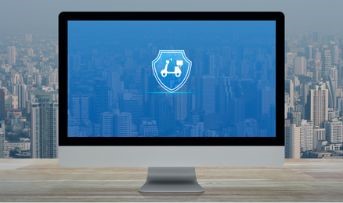
Follow these steps if you're concerned about the authenticity of your bike insurance
Hundreds of options are available for your bike insurance, both online and offline. You must have encountered tempting advertisements promising you the lowest premium with complete coverage for your bike. Also, we frequently receive calls from insurance companies or their agents with lucrative offers for buying our bike insurance from them.
But wait a moment. Are all these offers authentic? Will they provide you with complete protection, safety, and quick claim disbursal in the unfortunate event of your bike accident? You need to follow these steps if you have the slightest doubts and are concerned about the authenticity of your bike insurance.
1. Check with IRDAI:
The first step for checking the authenticity of your bike insurance is to check the website of IRDAI (Insurance Regulatory and Development Authority of India) and search for your insurance company. The insurance company will probably be a fraud if its name is not on the IRDAI website.
2. Go for a brand:
Always choose a bike insurance policy of a reputed company or brand. An insurance company that is well-known and reputed in the market is less likely to cheat and issue a policy with false claims and promises. Also, the chances of a fake policy from such companies are almost zero.
We often buy a bike insurance policy on the advice of an insurance agent or by getting influenced by some advertisement. You should first call the customer care of such companies and verify the policy details being sold to you. Also, you may visit the nearest branch of the company and verify the details there. Check whether the policy contains the same IDV (Insured Declared Value) and all the add-ons promised earlier to you. Buy the bike insurance policy only after you are certain about its genuineness.
3. Premium receipt and other details:
A genuine bike insurance policy will always issue a receipt for the premium paid by you. Also, the policy document will contain all the details, such as your name, policy tenure, terms and conditions of insurance coverage, etc.
To ensure the authenticity of your bike insurance, always insist on a hard copy of your premium receipt. Review your policy document thoroughly and ensure it contains all the required details.
4. Mode of premium payment:
A bike insurance company will give you several options to pay your bike insurance premium. You can pay it online through its website or issue a cheque in the insurance company's name and hand it over to the insurance company’s office or your insurance agent.
If your insurance company or agent is insisting only on cash payment or payment by cheque/bank transfer in the name of a person, it should be a red flag for you. The insurance company or the agent in between might not be genuine and authentic.
5. Verification link:
Insurance companies nowadays validate a bike insurance policy on their official portal at the time of issue. You can check the authenticity of your bike insurance policy by checking whether this link redirects you to the official website of the insurance company or not. This is especially important if you buy your policy from a 3rd party vendor.
The digitalisation of insurance services has contributed greatly to the progress and development of the insurance industry. However, fraudsters find new ways to dupe you while selling you a bike insurance policy. You need to be vigilant to protect your hard-earned money. Always verify the authenticity of your new bike insurance policy and its details before paying for it.
Bike insurance is compulsory under the law, and you must buy it from one source or another. Visit the nearest branch office of bike insurance companies, or go through their offerings in detail on their website. Call their customer care and confirm the details. Buy a good bike insurance policy that is genuine and does what it promises to do.
Click HERE to buy reliable bike insurance for your valuable two-wheeled asset.
Disclaimer: The information provided above is for illustrative purposes only. To get more details, please refer to policy wordings and prospectus before purchasing a policy.

These are the six best destinations to enjoy paragliding
Every one of us has once had a dream of flying. As kids, we have looked at birds and planes and wished for the ability to fly. Today, we have various ways to live this dream. Different adventure sports like sky diving, hang gliding, and paragliding have created opportunities where people can enjoy a safe yet thrilling experience of being in the air.
India proudly displays unique landforms, making it one of the most enjoyable places for such activities. Paragliders have referred to paragliding as one the most unforgettable experiences of their lives. Being up in the air and away from the ground is sure to be one of the most humbling experiences of your life.
Today we will look at a few places in India that offer this experience.
1. Bir Billing, Himachal Pradesh:
Situated near Kangra Valley, Bir is a beautiful village in Himachal Pradesh. It has over 11 paragliding options, giving it the name of the 'Paragliding capital of India'. Bir promises you the spectacular views of lush green mountains and the beautiful sunsets that paint the sky in all shades of orange.
2. Panchgani, Maharashtra:
Panchgani is a small hill station in Maharashtra that offers training as well as flying for all paragliding enthusiasts. The landscapes of Bilar, Khinger, and Tapola are arguably one of the best locations for flying. The best time to visit Panchgani is between November and February.
3. Arambol, Goa:
Goa is famous for its beaches, food, and party life. But Arambol promises priceless views of the Arabian Sea and beautiful arrays of palm trees. Choose the evenings for your paragliding adventure to watch the sunset while you sail over the blue waters reflecting its golden shine.
4. Nandi Hills, Karnataka:
Situated close to Bangalore, Nandi is the perfect place for adrenaline junkies, as many tourists choose it for camping, trekking, and paragliding. People here are mostly seen enjoying paragliding in the day and camping at night.
5. Gangtok, Sikkim:
The land of magic, monasteries, and mountains, Gangtok is a must-visit for anyone who wants to combine adventure and spirituality on their trip. Paragliding in Gangtok promises you a bird's eye view of the unexplored places in Sikkim and a beautiful view of the mighty Kanchenjunga.
6. Shillong, Meghalaya:
The Scotland of the east, Shillong, has a wide variety of flora and fauna. Paragliding here is sure to be a cathartic experience. Shillong is a canvas of dense, lush forests and beautiful waterfalls. Visit during the summer months to ensure the magnificent view that this palace has to offer.
These are a few of the best places in India that offer you a safe and fun paragliding experience. Over the years, adventure sports have become more prevalent in India. While well-trained and licensed professionals are always there to guide you through the process, invest a fair amount of time researching the best paragliders in the area to ensure maximum safety. Add to this a personal accident insurance policy to help you evade any expense that you might incur in case of an accident.
Click HERE to know more about personal accident insurance policy.
Disclaimer: The information provided above is for illustrative purposes only. To get more details, please refer to policy wordings and prospectus before purchasing a policy.

Best hacks for home buyers to purchase their dream home at the best price
Purchasing a home is a long, chaotic and hectic process. In addition to the budget, multiple other things come into consideration when you plan to buy a house. With several financial and real estate scams happening around, it becomes challenging to be decisive about purchasing a house. Several apps, real estate agencies, and brokers claim to help you find your dream space.
But how would you know if you are being scammed under the name of getting the best deal worked out “especially for you” or if you are getting the best price for your house? Do not worry. This blog lists the best hacks for home buyers to make them aware of what they need to know beforehand and purchase their dream home at the best price.
1. Talk to your bank:
There is a certain urge to move into your dream place. But before you get the ball rolling on your shifting, make sure that you communicate with your bank about getting a pre-approved loan. The bank must be ready to grant you the loan at a certain set rate. In addition, getting pre-approved from the bank also acts as a symbol of trust and confirmation for the agents and house sellers on your house deal.
2. Dig a little deep:
When you are looking into properties that are available for sale, be it a new construction or an old one, always investigate thoroughly. You should seek information on the reasons why the property is on sale.
And if the agent or the seller is in a hurry to sell the house, more often than you might predict, it could be a potential red flag which should lead you to dig a little deeper and see if you are willing to purchase that particular house or property. Only make your offer after you have all the details.
3. Be smart about your offers:
While low-balling on the prices is practised in our culture, it might get risky if the market on your property or potential dream home is competitive. You might lose the opportunity to negotiate further on your offer. So, gather some information on the comparable bids, do little calculations and come up with the best price in your first shot at the proposal.
4. Keep an eye out for the inspection:
You must be very vigilant about the inspection results when the home inspector comes and checks out the place. If your deal has been finalised and accepted and your home inspector finds any issue which can cause discomfort in the future, you need to get in touch with the seller as soon as possible.
Have a polite discussion with the agent or the seller to bear the repair charges or negotiate the price again to bring it down a little, keeping in mind the damages (this would be a wiser decision).
Some other tips include offering a quicker final decision/closing, negotiating respectfully, discussing the amenities in detail, and making yourself ready to compromise a little. These tips will prove handy to you when you go out looking for your future home.
We hope the blog was helpful and gave you the information you wanted. While we are on the subject of buying homes, it is essential that you also look into the home insurance option in advance to avoid the hassle of piling things up for the end. Purchasing the best home insurance policy in India will help you protect your home and your family from unfortunate circumstances and avoid monetary stress during such times of distress.
Click HERE to learn more about how you can buy the best home insurance policy in India.
Disclaimer: The information provided above is for illustrative purposes only. To get more details, please refer to policy wordings and prospectus before purchasing a policy.

Best tips to clean the seat belts of the car
A significant issue prevailing in the minds of drivers and car commuters while driving on the roads is their safety. You should drive safely to avoid the chance of any mishap, as it is rightly said that precaution is better than cure. Wearing seat belts while driving is crucial to lessen the impact of accidents if ever you meet with one. Cars today have mandatory regulations and systems about wearing your seat belts. Many vehicles have alert signs and sounds that do not stop until the driver and the co-passenger have put on their seat belts.
Different types of people might sit in your car. Sometimes, kids might wipe their hands or gnaw on the seat belts, getting them dirty. The dirt and dust might affect the material, and they could begin to smell or have developing infectious germs.
Do you want to clean your seatbelts but find it complex and confusing to figure out how and what ingredients to use? Don't worry. This blog discusses some of the best tips to clean your car's seat belts.
1. Separate the parts:
To clean the seat belts properly, calmly separate the parts without damaging them. You can remove the buckles and other buttons using a screwdriver. Separating the components makes it easier to access the stains or dirty areas and work to make them clean.
2. Pull:
It would be best to pull out the seat belt entirely until it becomes stiff and cannot be pulled anymore. This will ensure a thorough inspection and cleaning.
3. Clip it up:
You can use clamps or paper clips to ensure that the seat belt does not retract back. This helps in easier accessibility during the cleaning process. You can place the clamp near the reel (where the rest of the seatbelt part is stored).
4. Inspect for corrosion:
The steel portions of the seat belt can rust over time. You can use steel wool to polish the steel buckle of the seatbelt.
5. Identify the dirtiest spots:
Use a degreaser and spray it to identify the stains on the seatbelts. After identifying the spots, you can clean them softly, avoiding the risks of damaging the material of the belts.
6. Materials you should use:
Do not use sharp objects for a light dusting of the seatbelts. It may damage the materials causing the seat belts to wear out. Microfiber cloths are your best option for dusting or wiping the seat belts after a proper cleanup using water and detergent.
7. Recommended ingredients for thorough cleaning:
Make a water mixture with distilled vinegar and dish soap (liquid). Vinegar has antibacterial properties and eliminates foul odour. Dish soap cleans the stains and spots gently of the seat belt. The mixture prevents the possibility of bacteria and moulds.
8. Dry the belts:
Let the belt dry before letting it retract back into the reel. If the belt stays wet, it can cause fungus development on the material, leading to infection, bad smells, etc. Leave the car open and let the seat belts dry.
You can use a brush with tiny stiff bristles to remove the stains and sweat spots that require deep cleaning for removal.
Along with cleaning the seat belts and maintaining other parts of your car, a wise option would be to be prepared for unprecedented circumstances. While you can control the cleaning and maintenance process, the possibilities of mishaps are not under anyone's control.
It is wise to stay monetarily stress-free by exploring your options and purchasing car insurance India. Car insurance is a wise investment that can guarantee you healthy returns during emergencies. Understand your requirements and accordingly browse and choose a plan offering the best benefits with a reasonable premium.
Click HERE to know more about how you can buy car insurance India.
Disclaimer: The information provided above is for illustrative purposes only. To get more details, please refer to policy wordings and prospectus before purchasing a policy.

A detailed guide on how plumbing works at home
When we say “water is life”, it is more a reality than a necessity. A day without running water in the pipelines of our house can be torturous, as we will not be able to take baths, use the washrooms or cook. This is where our home’s plumbing system plays a crucial role.
A plumbing system in any house is usually very complex. It is beneath the floors or hidden behind the walls. Hence, any fault associated with it cannot be repaired easily without damaging the walls or the floor. Therefore, it is vital to understand the plumbing network and how it works at home.
Main components:
The main components of the plumbing system are supply, drainage, and venting. These components help to separate the potable water from the wastewater. This ensures that we get fresh water for personal consumption while the wastewater is thrown away through the drainage system.
Modus operandi:
The water supply system in our home works with the help of water pressure. Good water pressure is essential for the free and uninterrupted flow of water in all taps and showers in our home. Pressure carries the water from the tank or source of supply to the kitchen, bathroom, or wherever we need it. The water supply system functions with the help of pipes, valves, faucets, and plumbing fittings.
The drainage system works by using gravitational force. The drainage pipes are downward sloping to direct the wastewater to the sewage line or the septic tank. This ensures that the wastewater does not flow back out of the drain and spoil your home.
Vents in the plumbing system are as important as the water supply and drainage systems. We can usually see these vents emerging from the roof of our house. They emit air into the drainage pipes, so the sewage gases do not mix in the drains. This air ensures that the traps in the drains do not open, and the entire plumbing system does not get contaminated and malfunction.
Hot water:
Getting hot water through your taps adds an extra step in the journey of the cold water. The cold water first flows to the electric geyser or natural gas water heater. If you plan to install the geyser in or near your bathroom, it involves laying off a few extra pipes through which cold water will reach the geyser, and hot water will flow back to the taps, faucets, or the kitchen.
However, if you plan to install a bigger water heater on your terrace, such as a solar-panel-enabled water heater, you must plan the plumbing system properly. It will involve a complex network of pipes that will take the cold water to the heating system and distribute it back into your home.
Supply shut-offs:
Nowadays, homes are equipped with individual supply shut-offs for freshwater in every bathroom, kitchen, or balconies and washing area. We need to simply shut off the respective valve where we are planning repair work. All individuals at home should also be aware of the main shut-off valve so that anyone can restrict the water supply to the entire house in case of any emergency or malfunction.
We only realise the importance of a good plumbing system at home when it malfunctions and needs repair. As we use this system hundreds of times daily, we must ensure it is top-quality.
Similarly, we need to ensure a good home insurance policy that takes care of our house and well-being by protecting it against damages arising from theft, fire, earthquakes, etc. We accept the importance of a home insurance policy only when the actual damage occurs. So why wait for such instances? Go for the best home insurance in India and keep your worries aside.
Click HERE to buy the best home insurance in India.
Disclaimer: The information provided above is for illustrative purposes only. To get more details, please refer to policy wordings and prospectus before purchasing a policy.

Let's understand the possible reasons for brake failures in cars
Failure of brakes can be a terrifying experience for drivers and have life-threatening consequences. According to statistics, a significant number of road accidents occur due to failed brakes. But how can you avoid such mishaps?
Apart from getting your car checked and serviced periodically, one way you can save it from landing in such grave situations is by being aware of the signs of brake failure.
This blog will discuss the possible reasons for brake failure in cars.
1. Brake cylinder:
A damaged or rusted brake cylinder is one of the leading causes of brake failure in cars. The brake cylinder's function is to compress the fluid. It consists of a fluid reservoir, which has a connected steel tube. There are higher chances of fluid leakage in the rusted pipe or the cylinder. This leakage can lead to brake failure.
2. Brake pad:
Brake fade is the term used for overheating of the brake pads. The overheating is caused due to excessive usage of the brake pads forcing them to become hard or fragile. Due to this, brake pads lessen their grip around the rotor or the disk, resulting in the car covering a certain distance before coming to a full halt when you press the brakes.
3. Overloading:
Overloading your vehicle can reduce the power of the brakes and potentially damage the braking system. You need to ensure that you follow the manufacturer's loading capacity to avoid the malfunction of the car's brakes.
4. Proper replacement:
Many people ignore the importance of changing the brake pads after some time. Brake pads can wear out due to excessive usage and lose their grip causing the brakes to fail. To avoid any risks, you must replace the brake pads and get the brake system thoroughly examined by a mechanic.
5. Moisture:
Moisture in the brake fluid can potentially damage the braking system. When the car runs, the liquid temperature rises, and the moisture (water droplets) becomes steam. The steam upon transmission can cause a brake system failure. Therefore, it is recommended to change your brake fluid after a certain period as instructed in the car manual.
6. Brake booster:
A brake booster magnifies the force you put on the pedal to push it. The failure of the brake booster can significantly lessen the maximum amount of power you need to slow down or halt your car.
7. Auto parts:
Using bad quality auto parts in your car is one of the worst decisions you can make. Their poor quality makes them unreliable and can lead to the failure of the brake system.
Other reasons which could lead to brake failure in cars could be damaged brake hoses, driving roughly through mud or water, issues with rotor disks, improper lubrication, etc.
Some other signs that indicate a brake failure:
• Issues with the brake pedal
• Dark brake fluid
• The braking system warning light is on
• The vehicle takes longer to halt
• Burning smell
• The car moves to one side when brakes are applied
• Grinding noises
That's a wrap on the discussion about some reasons for brake failure in cars. We all have understood the importance of keeping the vehicle in good condition. Unexpected brake failures can be a nightmare and lead to adverse consequences. It would be wise to undertake all the above possible reasons with severity and periodically examine your car's braking system.
Another way to safeguard your car against damages and accidents is by investing in car insurance. Review various plans and select the car insurance offering maximum coverage to your vehicle.
Click HERE to know more about best car insurance policy.
Disclaimer: The information provided above is for illustrative purposes only. To get more details, please refer to policy wordings and prospectus before purchasing a policy.

Before you buy your car, here’s all you need to know about ex-showroom and on-road prices
You have saved money for a long time to be able to finally buy your dream car and bring it home. It is a special feeling to give whatever it takes to turn your dream into a reality. However, you should know the various aspects of car buying in India. Before you consider buying a car, you need to understand the difference between the ex-showroom price and the on-road price.
If you don't know what these two terms mean, this article will help you. You will be familiarised with everything that can determine your car's price and help you consider all these parameters before you invest money in a car.
*pro-tip
You should always buy new car insurance for your car to keep it secure and take care of the expenses against any unforeseen accidents.
What is the Ex-showroom price?
The ex-showroom price is a price tag posted on various vehicles like cars or bikes in the showroom. It does not include road taxes, RTO registration, insurance, etc.
To understand the price at the ex-showroom, you need to know that:
● The ex-showroom price is the price you see being advertised on television, the internet, and on the car manufacturer’s website and brochures.
● You need to pay the additional amount for road tax, the registration fee for RTO, and insurance before you own a car. If you do not, you can be charged with a variety of penalties or challans in India.
● The price displayed as the ex-showroom price includes GST, ex-factory cost, and profit margins.
What is the On-road price?
The on-road price of a vehicle refers to the total price you pay to start driving the vehicle on the road. Simply buying the vehicle from the showroom is not enough. You must pay for several other things if you legally want to drive your car in India.
Some important things to consider under the on-road price are:
● It includes a variety of prices like ex-showroom price, registration fee, road tax, and insurance policy, among others.
● If you need any new accessories, they will also be added to your final bill with applicable taxes.
Difference between On-Road and Ex-Showroom price:
1. The ex-showroom price is the price tag excluding other factors like tax, insurance, and registration fee. The on-road price uses all the additional charges: life insurance policy, road tax, registration fee of RTO, and so on.
2. The ex-showroom price does not justify the final price of your car. You need to pay a lot of additional costs. On the other hand, the on-road price is the final price of a vehicle. You need not pay additional costs.
This gives you enough insight into how the car is priced at the showrooms. The price you see on the internet is clickbait to lure you into buying the car. You should be fully aware of the on-road price of a car before you buy it. This will help you analyse your budget better and prevent you from going overboard with your decision. You should also buy new car insurance that gives the best insurance coverage against any mishaps.
Click HERE to buy new car insurance to safeguard your valuable asset.
Disclaimer: The information provided above is for illustrative purposes only. To get more details, please refer to policy wordings and prospectus before purchasing a policy.
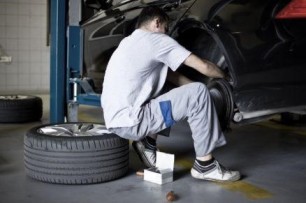
Six tips for choosing the right auto repair shop
Owning an automobile is one of the most rewarding things in life. Going on long road trips, midnight drives, or simply commuting between your office and home, having your own vehicle is sure to make you happy. But like everything, this also comes with its set of challenges. Zeroing down on the best car insurance company in India, and choosing the right auto repair service are just a few of the many things that need your attention.
Selecting an auto repair shop is not only about the care that your car gets but also about the rates, reviews, customer service, and overall experience. It is a good idea to look for options even before your automobile faces any issue so that you already know where to go. Let's look at a few ways to select a reliable auto repair shop.
1. Experience:
Your car's relationship is with the mechanic, not the company. Look at customer reviews online and get to know the mechanic who will be working on your vehicle. Having an experienced mechanic allows you to have peace of mind.
2. Company-specific service provider:
Repair shops that specialise in specific companies have more hands-on training with upgraded instruments and tools. So, it is best to go to a service provider who deals with the same company as you.
3. Online reviews:
Online reviews are a great way to understand the history of the company. More often than not, people tend to leave reviews of bad experiences they have had with the company. Keep in mind that not all companies have a 5-star rating. So going by the reviews and personal entries, you can make an informed decision about what kind of service you require.
4. Estimate pricing:
Solely depending on your car servicing agent might not be a good idea. Asking around in various service centres and mechanic shops, online rates, etc., can be an excellent way to estimate the money you might have to shell out during or after the process.
5. Warranties:
Ask your mechanic about warranties on different parts. This time frame varies from place to place. Having a good warranty period is crucial to ensure better car performance. A warranty ensures that you get a replacement free of cost.
6. Off-site services:
Sometimes, your car can break down during your journey. Under these circumstances, having your service provider's support will make it easier to avoid further damage. Before signing up for the services, talk to the staff and understand if they are willing to service your vehicle outside of the service centre. Having this added benefit goes a long way and ensures the credibility of your repair shop.
You need to keep these points in mind while choosing your repair shop. Having the right mechanic work on your car is a boon for you and your vehicle. Poor servicing can lead to poor performance and be costly in the longer run. To save yourself from the extra expenditure, it is an excellent option to first look for the best car insurance company in India. Car insurance can offer a bundle of exclusive benefits useful during unexpected mishaps.
Click HERE to know more about the best car insurance company in India.
Disclaimer: The information provided above is for illustrative purposes only. To get more details, please refer to policy wordings and prospectus before purchasing a policy.
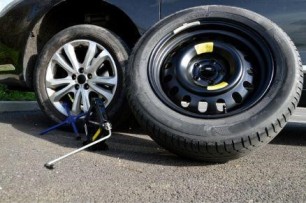
Practice these care tips to keep your car's tyres and rims in good condition
A car has become more of a need than a luxury in recent times. It makes commuting and travelling highly convenient. People invest their time, effort and capital while purchasing a car to ensure it is to their liking while meeting their requirements. Many factors influence their purchase, like the model, budget, convenience, features, etc.
Taking care of your vehicle is crucial. You need to ensure that your car is regularly maintained, cleaned and goes for servicing periodically, as instructed. Always use authentic auto spare parts and follow all the service standards recommended by the manufacturer.
There are also chances that many exterior parts might get damaged due to extensive use of the vehicle. The wheels face maximum wear and tear due to constant friction. Practice these care tips to keep your car’s tyres and rims in good condition.
1. Pressure:
It is essential to check the air pressure of your car’s tyres, preferably before you start driving. Suppose the pressure is below the recommended limit, then there is a considerable danger of a blowout that might disbalance your car. This condition can wreak havoc on your driving and risk your safety. In addition to this, low pressure also reduces your vehicle’s efficiency, mileage and affects the life of the tyres.
2. Inspection:
You need to deeply examine your vehicle’s tyres for unusual wear and tears, cuts, punctures or other damages. Get the car checked by an expert for repair or replacement if needed. In case of a puncture, replace the tyre with a spare until you get to a service centre and have it inspected by a mechanic thoroughly. Call a professional if you’re stuck with a damaged tyre in the middle of a long-distance road trip.
3. Rotation:
Maintain a rotational routine of your car tyres to ensure an even balance of tread wear. Ensure proper examination of the tyres by a professional during the rotation procedure. They can help you determine early or late wearing down and find the reason to save you from any further risks.
4. Curbs:
Bumping into or driving close to the curbs can damage or bend the rims. Try practising parallel parking with cones or other items that will not scrape off your rims if you bump into them.
5. Properly clean up:
Use standard quality products and cloth materials to clean the rims of the wheels. You can risk corrosion of the metallic coats and cause damage to the alloys if you use acid-based cleaners. Use a gentle soap and water mixture and rub firmly to make the rims shine.
6. Alignment:
Misaligned wheels can lead them to wear out unevenly. This ultimately causes loss of control, reduces their strength, and amplifies fuel consumption, reducing efficiency. Get your alignment adjusted whenever you get your car inspected by a mechanic.
Other tips to keep tyres and rims in good condition include maintaining good driving practices, avoiding overloading your car, inspecting the tread depth, ensuring that the spare tyre is in perfect state, accurate wheel balance, etc.
We covered one crucial aspect about taking proper care of your car. But to avoid any severe damages and monetary stress due to unprecedented circumstances, it is wise to get your vehicle insured. Purchase car insurance that caters to your needs and safeguards your vehicle from damages and financial loss.
Click HERE to know more about car insurance.
Disclaimer: The information provided above is for illustrative purposes only. To get more details, please refer to policy wordings and prospectus before purchasing a policy.

A complete guide on hamstring injuries and the best ways to get relief
While YOLO (You Only Live Once) can be the mantra for many of us to enjoy and create beautiful memories, it is also important to remember that accidents come without warning. The slightest of injuries can make your life uncomfortable to an unimaginable extent. You can never be too cautious, and it does not harm to be careful and vigilant about the body against the potential dangers in the surroundings.
This blog is a complete guide on hamstring injuries and the best ways to get relief. If you are someone who has no information about hamstring injuries, their diagnosis, recommended treatments, symptoms, and causes, do not worry. Here we answer all your questions about hamstring injuries right from the meaning. So, without any further delay, let’s get started!
1. What is a hamstring injury:
Often, you might have noticed athletes and people who are into fitness and go to the gym regularly get their muscles pulled. A strain or a tear in the muscles or tendons in the backward portion of your thigh is described as a hamstring injury.
Athletes, gymnasts, and sportspeople who practice long jumps, high jumps, climbing, etc., are usually at risk of these hamstring injuries, which can make movement and daily chores and practice very difficult for them. In some cases, the severity of the damage and the induced pain can lead to getting disqualified from the competition or complete bed rest.
2. Let’s learn a little more about hamstring:
The hamstring joins the bone and the largest thigh muscle in your body and helps the leg bend and stretch easily. When you jump, climb a rope, jump, stretch, run or sprint, your hamstrings are used extensively.
The level of the injury is described by the extent of damage caused to the hamstring. A grade one injury involves a slight muscle pull, whereas a grade two injury indicates a partial muscle tear. The most severe grade three injury occurs when there is a complete muscle tear.
Note: if someone has suffered a hamstring injury, it makes them prone to it in the future if they do not take proper care.
3. How is the hamstring damaged:
The causes include overstretching, lack of rest combined with fatigue after a heavy workout session, a direct hit on your thigh, insufficient warm-up before athletic and sports activities or workouts, lack of a pre-conditioning program, and a history of hamstring injuries.
4. What are the symptoms:
You need to be aware of the symptoms of different grades of hamstring injuries (as discussed in the second point). If you have a grade one injury, you will experience sudden increasing pain in the backward portion of your thigh, leading to difficulty in movement. In this stage, your leg strength will remain unaffected.
If you have a grade two injury, you will experience some inflammation, redness, swelling, soreness, bruise patches, and a decrease in the strength of your leg. A grade three injury will worsen the pain, inflammation, swelling, bruise marks, and tenderness. A popping sensation occurs when you initially injure the hamstring.
5. Best ways to get relief:
The RICE method: rest, ice, compression, and elevation are essential to help you manage the injury and get relief from the pain and the soreness in your hamstring. Avoid excessive movement till the soreness goes away and the swelling goes down. Ice the area at fifteen-minute intervals for the next day or two.
A thigh sleeve (elastic, preferably) or a compression wrap is a wise choice to help support the area during the slightest movement. Subtle exercises like lifting your leg to a comfortable level while sitting on a chair or the edge of the bed help during the icing intervals. Crutches are advised if the movement is unbearably painful.
You must be careful and take the required measures to be watchful about your body. It is also wise to get personal accident insurance to avoid monetary stress in times of difficulty. You can explore all your options and purchase the best personal accident insurance online which suits your requirements.
Click HERE to learn more about buying personal accident insurance online.
Disclaimer: The information provided above is for illustrative purposes only. To get more details, please refer to policy wordings and prospectus before purchasing a policy.

Get rapid relief from sore throat with these natural remedies
Waking up with a sore throat can be worse than waking up from a nightmare. Every time you gulp your food or cough feels like sheer torture. On most days, the sore throat may vanish if you drink enough warm liquids, but sometimes it can take days to heal.
The pain and itch in the throat can be troublesome enough to distract you from your day’s routine and cause constant discomfort. There can be several causes for a sore throat like viral and bacterial infections, acid reflux, etc. While taking medicine for these illnesses is an effective way of getting rid of soreness, it may still take time to give you some comfort.
Antibiotics can take days to help, and if you have an important meeting to attend, you may be in for some trouble. Worry not; here are a few helpful natural remedies that can give you instant relief from a prolonged sore throat!
1. Saltwater gargles:
Gargling with salt mixed in warm water is one of the best and quickest remedies to relieve a sore throat. If an infection or inflammation causes your sore throat, warm salt water can help kill the bacteria present in the throat and reduce any inflammation.
Mix half a spoon of salt in a glass of warm water and gargle for at least 10 minutes. This will instantly kill any germs present, soothe irritation and calm swelling or inflammation.
2. Honey and Lemon:
Honey has antibacterial properties, which significantly reduces inflammation and soothes your throat. Lemon juice contains vitamin C to boost your immunity, break down the mucus and help you fight your infection. Add one spoon of lemon juice and two spoons of honey to warm water or tea and sip on it as a soothing concoction to get pain relief in a matter of minutes.
3. Chamomile or herbal tea:
Our ancestors have used herbal teas for ages knowing their medicinal properties. Chamomile or herbal tea has antioxidant properties that instantly calm inflammation and kill germs. Drink a cup of hot chamomile tea to soothe your throat from itching. You can add ingredients like turmeric to the tea to boost your immune system.
4. Steam inhalation
Steam inhalation is the best way to relieve your blocked sinuses, kill germs present in your nasal and throat cavity and clear the throat. It also helps you expel all the phlegm that may be causing congestion or soreness in your throat. Boil a pot of water and inhale through your nose and mouth to instantly relieve your sinuses. Continue this for a good 15 minutes to calm your irritable throat.
5. Cough syrup and lozenges:
While doctors usually prescribe cough syrups to fight infections, you can also use them to soothe your throat. Cough syrups have soothing anti-inflammatory properties that act not only on the infection but also on the inflammation in the throat.
You can also chew on lozenges containing ingredients like gingers, honey, lemon and peppermint to produce enough saliva that prevents your throat from drying out. This ultimately soothes your sore throat.
While you can simply buy online health insurance and ensure a safe future for you and your family, dealing with constant health ailments can be vexing. These few quick home remedies can give you rapid relief from a common cold or sore throat to make your daily life simpler! Try practising mindful activities like yoga, meditation, and pranayam to keep your body in the best shape possible and promote a healthy lifestyle.
Click HERE to buy online health insurance.
Disclaimer: The information provided above is for illustrative purposes only. To get more details, please refer to policy wordings and prospectus before purchasing a policy.

Best tips for uphill bicycle riding
Cycling has seen an increased number of enthusiasts over the past couple of years. Fitness lovers found a new way to keep themselves fit by cycling to the public parks as an alternative to the gyms. Cycling is an activity that does not require a lot of skill and techniques. Still, if you want to learn more about cycling as a sport or wish to venture into various terrains on your bicycle, there are a few things that you should keep in mind to make the process easier and more enjoyable.
One of the most challenging parts of cycling is traversing uphill roads. It is both exhausting and time taking. But with the proper techniques, you can easily manoeuvre this route.
Today we will discuss a few ways to make your uphill journey on the bicycle easier.
1. Do not start fast:
Many riders make the mistake of starting fast, right at the bottom of the uphill journey. This can be the first mistake that you make while riding uphill. Depending on the ascend and the steepness of the slope, it is best to distribute your energy and utilise it on the last leg of the peak. The final portion of the rise requires the maximum energy as it is the steepest part of the ascend.
2. Alternate between sitting and standing position:
Alternating between these two positions can help you significantly in manoeuvring the climb. Cover the distance while being seated and as you reach the final climb, stand up to increase the energy and to acquire the desired push. Activate your muscles, lift your body, and apply pressure using your legs to pedal heavily.
3. Finding a rhythm:
For longer climbs, it is best to set a riding pattern. As mentioned above, switching between speeds, positions etc., can help you form a rhythm and help you focus your energy more on riding instead of ascending.
Find a rhythm that works for you. Gasping is a sign of wrong techniques and wasted energy. For more extended periods of time on the ascend, your breathing should be deep constant.
4. Set small milestones:
Conquering the peak in one go can be a daunting task. Instead of looking at it as a mammoth assignment, it is best to set smaller goals instead. While making the climb, take note of the small details on the road. Like a post box, garbage bin or a tree. Setting these small goals can be an incentive for you.
You can associate these goals with rewards, such as after you reach a goal, you can change your pace, try a new method or just stop for a bit. This way, the road becomes a journey and not a task.
5. Don’t fight the wind:
Fighting the wind is probably the worst thing a rider can do. Your overall speed and energy levels are massively affected by the wind and its direction. Fighting against the wind always means using up all your energy which you can use later for your ascend. Instead, go slow if the wind is against your riding direction.
Sparing sometime of your day for such physical activities can help you in the long run. However, excessive cycling can lead to injuries and a weaker immune system. Uphill riding is never an easy venture, and acing it requires fitness and determination.
In the process, you might even face injuries and mishaps. This is why it is essential to strike a balance. In case of an injury, doctors suggest various physiotherapy sessions and other medications. These treatments can burn a hole in your pocket; hence you should consider buying an individual personal accident insurance policy. Individual personal accident insurance policy safeguards you in case of accidents and injuries, and the cost incurred during your treatment.
So, keep your passion for cycling alive, and ride your way to fitness!
Click HERE to know more about individual personal accident insurance policy.
Disclaimer: The information provided above is for illustrative purposes only. To get more details, please refer to policy wordings and prospectus before purchasing a policy.

Understand these signs that show newborn illness and immediately act on them
Bringing home your newborn from the hospital is a wonderful yet challenging experience as a parent. The fear of the infant getting sick is a big worry. It takes time to understand typical infant behaviour and gauge abnormalities, which can be challenging.
Detecting initial signs of illness is crucial as it gets difficult for infants to fight off diseases that spread swiftly due to weak immune systems. Comparing family floater plans offered by online health insurance companies is an equally important step to consider to protect your baby.
Additionally, here are some symptoms of newborn illnesses to be aware of.
1. Consistent crying or irritability:
A baby can only communicate its needs by crying, be it hunger, tiredness, loneliness, a change of diaper, or discomfort. At first, you might not understand your baby's cries, but cancel out reasons to identify the cause. Consistent irritability and cries are signs of sickness.
2. Fever:
Bacterial and viral infections, including pneumonia, ear infections, stomach bugs, and urine infections, can cause a fever. Use a digital or mercury-free glass rectal thermometer to take your child's temperature. A temperature of up to 100 degrees is considered normal. For children younger than three months, a temperature of 100 degrees or more, and 101 degrees for children between 3 and 6 months is the threshold, after which you must immediately contact the doctor.
3. Apathy or laziness:
Being tired, dizzy, listless, or excessively sleepy without responding to sounds and sights or reduced appetite are gradual changes you may notice. Lethargy may be a symptom of an infection or other illnesses, like low blood sugar. If your infant shows fatigue or isn't as active as before, consult the doctor.
4. Little appetite:
Most babies eat every three to four hours after the first day, and they will typically express their hunger by sucking on their hands or fingers, screaming, or making yelling gestures with their hands or fingers. Contact your paediatrician if your infant refuses to eat and skips multiple feedings.
5. Vomiting and diarrhoea:
Intestinal, bacterial, or viral infections and obstructions can cause vomiting and diarrhoea. Regular examination of your baby's poop can help the doctor identify bacterial infections. The symptoms of viral infections generally go away after about a week without medication.
6. Inconsistent stools:
Your infant may lose excess fluids due to a fever, illness, or heat and have extremely dry stools. Once your baby begins eating solids, excessive consumption may cause constipation and the formation of firm stools due to difficulty in digestion.
7. Urination:
Typically, babies soil a minimum of four diapers daily. Excessive urination could be due to an infection or other urinary tract issues, such as distress while peeing. A pinkish stain on your baby's diaper indicates concentrated urine and is not worrisome—however, blood in its diaper or persisting discomfort requires a doctor's intervention.
Immediate steps of actions:
Caring for an infant is a significant responsibility that requires prior planning. We encourage to-be and new parents to compare infant insurance offered by online health insurance companies and prioritise their child's health.
Once you notice any symptoms persisting for long periods and deviations from typical behaviour, rush to the doctor. Ensure you follow the doctor's advice to nursing your child back to health. Additional preventive measures include:
● Introducing easy-to-digest foods
● Keeping a constant watch on your newborn
● Maintaining a clean environment
Dealing with kids is always a challenging task, especially when it comes to infants. Since they have weaker immune systems and cannot do things for themselves, it is the parent’s responsibility to make prior arrangements to provide the best possible environment for the infant to thrive in. You can start by including your infant in your family insurance plan after carefully considering the alternatives online health insurance companies offer.
Click HERE to buy insurance for infants from online health insurance companies.
Disclaimer: The information provided above is for illustrative purposes only. To get more details, please refer to policy wordings and prospectus before purchasing a policy.

Know more about the long term effects of using cosmetics
Cosmetics have become an integral part of our daily lifestyle. Facial makeup, perfumes, nail polishes, eye makeup, hair colours, etc., all enhance our physical attributes and appearances. The cosmetics market has developed various products for different cultures, skin tones, types, and seasons.
While these products may accentuate your physical features and give you a sense of confidence, they can be harmful in the long run. The high chemical contents present in cosmetics can be toxic to your skin. Often, the side effects of these chemical ingredients are not mentioned on the packaging.
The harsh chemicals in cosmetic products can affect the functioning of your skin's protective barrier, making it significantly easier for pathogens to enter your skin. Regular usage of makeup can hurt your skin's glow.
This article will discuss the long-term side effects of using cosmetics. You need to be aware of these consequences to be vigilant about the ingredients and the usage of cosmetic products.
1. Ageing:
One of the worst things you can do to your skin is to apply makeup without sunscreen. When you expose your skin to the sun, it damages your skin and leads to premature ageing signs like wrinkles, age spots, and fine lines. Also, make sure that you remove your makeup before calling it a night; otherwise, it can get into your pores and break the elastin, thus causing wrinkles.
2. Cancer:
Many cosmetic products like waterproof mascaras, foundations and long-lasting liquid lipsticks contain polyfluoroalkyl substances. These toxic chemicals are proven to cause cancer. When added, they change the properties of surfaces to make them resistant. PFAS are usually not mentioned on the packaging and labels of cosmetic products, making it difficult for consumers to detect their presence.
3. Allergy issues:
Cosmetic products are made with different ingredients. Some are formulated with mild components that don't affect your skin's health. However, products with strong and harsh elements like parabens and SLS-Sodium Laureth Sulfates can trigger your allergies, severely damaging your skin.
4. Acute risks:
Several cosmetic products have ingredients that pose the risk of burns and infections. Hair-straightening products (keratin treatments) contain formaldehyde. Frequent usage of such products can cause blisters, extreme hair fall, rashes, etc.
5. Behavioural issues:
Makeup products consist of eyeliners and lipsticks. Lead (heavy metal) is a component of these makeup essentials. If ingested in small amounts over time, it can have severe consequences like behaviour and cognitive problems, which can be concerning and can disturb your everyday lifestyle.
Now that we have discussed the long-term side effects of using cosmetics, it would be wise of you to consider safeguarding your health in case of unforeseeable circumstances.
Health emergencies bring in a lot of monetary pressure, causing additional stress. You can buy health insurance online to save yourself and your family from the financial load of unprecedented situations. Lastly, act wise, never overuse cosmetics, and use natural products free from harmful chemicals.
Click HERE to know more about how you can buy health insurance online.
Disclaimer: The information provided above is for illustrative purposes only. To get more details, please refer to policy wordings and prospectus before purchasing a policy.

Check out these home makeovers tasks on the upcoming weekend
A home is so much more than just a shelter. It is where you create memories, watch your family thrive, and compound your wealth. Considering the constantly increasing prices of homes, buying one is a dream that not many accomplish easily. Recognising the monetary and perceived value associated with the asset, it becomes essential to protect your home and personal belongings from unforeseen circumstances like burglary and vandalism by buying home insurance India.
While home insurance India is a periodic investment that satisfies your safety requirements for a specified tenure, the interiors of your house do not fall into the same category. With changing trends, tastes, and preferences, it is inevitable to wish to renovate and alter the aesthetic appeal of your home. However, you may not have the finances to avail the services of professional designers to bring your vision to reality and design your ideal space.
In such a case, fret not! Here are some inexpensive and easy DIY tasks you can take on the weekends to give your home a new look!
1. Entryway systemiser:
The area that greets a visitor upon opening the main door is the easiest way to build a great impression and set the tone for the decor used in the rest of the house. While you may customise it as per your tastes, it is essential to keep it organised to give your home a put-together look. Revamp your entryway with a compact organiser that stores all your keys, sunglasses, and bags. While you may purchase separate hooks, boxes, or frames for this area, consider arranging existing sturdy holders to create a sustainable assorted organiser.
2. Foyer frames:
The room that the entryway leads into, often known as the hall or living room, is the most used space in all houses. It is also the best place to display valuable memories such as photographs, achievements, and sample works of your hobbies and interests. The possibilities for this idea are endless, ranging from minimalistic matching frames to vibrant and funky options in different sizes and shapes.
3. Create an accent:
Often, homeowners feel the need to refresh their homes to complete renovations. However, if you wish to see immediate results and are working on a tight budget or with limited time, an accent wall or furniture may be your ideal solution. Identify a complementary colour to the current colour palette of your home’s interiors and consider options ranging from artwork, accessories, upholstery, furniture, or a wall.
4. Refresh your accessories:
Sometimes, small changes go a long way in creating the desired results. Consider changing minute details in a themed manner to achieve a cohesive effect. This may be by changing your lights to similar-toned ones to set the mood or switching your furniture’s hardware.
5. Switch things up with contact paper:
Contact paper is your rescue if you’re looking for a quick fix to alter your furnishing and flat surfaces’ visual appeal. You can achieve this without fundamentally altering their surface by using contact papers. These decorative materials come in several trending prints and are available in the length you require per your project’s needs.
Simply peel away the backing and stick it to the desired surface. It makes changing the look of your home effortless since it is easy to remove and reuse, making it perfect for renters who wish to personalise their rented homes without going against the rules laid by the homeowner.
When facing time and budget constraints, hanging lights and getting plants are only some of the makeover options available. With creativity and consideration of functionality, you can efficiently use your time, resources, and space to create beautiful additions to your home’s appeal. As you invest your time and energy in home renovation projects, we encourage you to consider purchasing home insurance India, which is an investment in securing your home from external contingencies and protecting your finances.
Click HERE to buy home insurance India policy.
Disclaimer: The information provided above is for illustrative purposes only. To get more details, please refer to policy wordings and prospectus before purchasing a policy.

Concerned about malicious mischief and vandalism? House insurance is the solution you're looking for
Buying a home is a dream for most Indians. Considering the ever-increasing inflation, sky-rocketing real estate prices and constantly changing economic conditions, it requires extensive planning and budgeting. After putting in such efforts, a home becomes more than just a roof over one’s head- it is an investment, a sign of wealth, and probably the most important asset of your net worth.
Protecting an asset on which you have spent a fortune is essential. Buying the best home insurance policy in India is important to secure your home from multiple mishaps. While the best home insurance policy in India may offer you broad coverage from several risks, is the increasing threat of malicious mischief and vandalism included?
Read on to learn all about the specific coverage under home insurance.
What are acts of malicious mischief and vandalism?
To understand what the best home insurance policy in India covers, we must understand the meaning of the terms malicious mischief and vandalism.
Malicious mischief refers to the acts of destruction with the intent to damage or destroy property. It is usually acted out as a sign of resentment towards the property owner. Criminal mischief is recognised as a legal offence as per the Indian Penal Code, which prescribes an imprisonment term of 3 months, or fine, or both for perpetrators.
Vandalism is commonly used to describe the destruction of property without malicious intent targeting the owner. It is often seen as a mindless activity done to achieve the satisfaction of destruction rather than being fueled by ill intent. Vandalism is a punishable offence in India.
The need for malicious mischief and vandalism insurance.
While the terms may seem unfamiliar, malicious mischief and vandalism are rampant in the country. Irrespective of intent, such acts result in minor to massive losses for the property owner, depending on the scale.
In such situations, the prudent purchase of the best home insurance policy in India covering such acts pays off. Since one cannot immediately pinpoint the instigators of such acts of destruction, legal cases don't suffice as an instant relief. By comparing alternatives and purchasing the best home insurance policy in India, you can ensure the immediate raising of a claim and quick settlement of financial losses arising from vandalism and malicious mischief.
Exclusions from vandalism and malicious mischief:
1. If your property has been vacant for over 60 days consecutively, you cannot raise a claim even as a victim of vandalism or malicious mischief.
2. Suppose multiple people are listed as home insurance policyholders. If one of them intentionally indulges in destructive acts to damage the property, the other policyholders cannot raise a successful claim against the perpetrator.
General inclusions under vandalism insurance.
When comparing home insurance policies offered by multiple insurers to find the best home insurance policy in India, you may notice that each insurer offers a varying reimbursement limit and the extent of property covered under the policy. While minute details can differ, most vandalism and malicious mischief covers extend to the following.
1. Fixed structures:
The most apparent inclusions are the fixed structures on your property. This includes the house or flat's external frame, additional safety door, and exterior add-ons like mailboxes or shoe racks.
2. Personal property:
The best home insurance policy in India offers coverage for all your home appliances, furniture and fittings. Refrain from raising a claim for the destruction of commercial holdings since they are not covered by such plans.
In the backdrop of uncertainties, it is always ideal to have a security net that protects homeowners from the risk of vandalism and malicious mischief. If you are considering purchasing a house, ensure that you do due research to identify the best home insurance policy in India to safeguard your home and your finances!
Click HERE to invest in the best home insurance policy in India.
Disclaimer: The information provided above is for illustrative purposes only. To get more details, please refer to policy wordings and prospectus before purchasing a policy.

How can you detect faults in your home’s electrical circuit
Detecting faults in your home's electric circuit can be simple if you know exactly where the fault is or which appliance has malfunctioned. Proper knowledge is the prerequisite to easily detecting faults in the home electrical circuit. It can be in any room, hallway, verandah, bathroom, bedroom, or kitchen.
The power supply may get disrupted in the entire house or only some portion of it. Safety is paramount when it comes to detecting faults in electric circuits. Even a small mistake can cause loss of life and massive property damage.
Are you someone trying to detect electrical faults for the first time? Let us understand how you can proceed with it conveniently.
1. Get the right gear:
The right equipment and tools are necessary before repairing a fault in your home's electric circuit. Get the right tools that ensure your safety while checking for the fault. Use a socket tester and voltage meter to check the running current.
2. Switch off the main power supply:
Make sure you switch off the main power supply of your house before trying to touch any open wire or faulty appliance. You can also remove the circuit fuse of the particular room or area where you plan the repair. Failure to do so can result in an electric shock.
If there was smoke or crackling noise from any wire or switchboard, wear rubber boots or slippers and rubber gloves before touching any wire or board. They will provide some electrical insulation if they are made of 100% pure rubber without any holes or tears.
3. Testing a faulty appliance:
If any of your appliances are not working, you should try to plug them into another socket to ensure it is working properly. If the appliance works there, you have a problem with the circuit of that particular room. If the appliance still does not work, it means that your house's electric circuit is okay and not at fault. You will have to get the appliance repaired from the electrician.
4. Checking the Fuse / MCB:
Our homes have fuses or MCBs (Miniature Circuit Breakers) for every room and separate portions of our house. To prevent overloading, there are separate MCBs for heavy appliances, such as an air-conditioner. When a circuit or appliance malfunctions, the fuse will break, or the MCB will trip automatically, which will shut down power to that circuit.
Whenever you face a power problem in any particular house area, you should first check the respective fuse/MCB. A faulty appliance can also result in tripping off an MCB or blowing a fuse. You can repair the fuse by fixing the live wire if the fuse is blown. If the MCB is down, you should switch it on again and check for the fault in that particular room or appliance. If the problem is still there, the MCB will trip or shut off again. In such instances, you should call a qualified electrician rather than fixing it yourself.
5. Faulty power line:
If all the MCBs are also fine and there is still no power in your entire house, the problem can be bigger from the main line or the transformer. Please do not try to rectify faults from the main line because of the high voltage running through them. Call a qualified technician who is capable of repairing such faults.
You do not have to run for a qualified technician whenever you have a minor electrical fault at your house. You can also detect and repair the fault if it is not that severe and manageable. However, you should be careful while checking or repairing faults in your home electric circuits.
Faulty electric circuits and malfunctions can result in fire and heavy loss at your house. Fret not! Home insurance provides you with safety and security from any such unfortunate events. It covers the house structure and its contents and assists in rebuilding the damaged property. Get complete peace of mind by opting for a good home insurance policy.
Click HERE to purchase a comprehensive home insurance policy.
Disclaimer: The information provided above is for illustrative purposes only. To get more details, please refer to policy wordings and prospectus before purchasing a policy.

How technology-aided insurance services can be a benchmark in efficient customer handling
In recent times, technological advancements have been table-turners for corporates in the insurance industry. They aim to bring a noteworthy revolution to the conventional business management approach. The reorientation of the entire business using these futuristic technologies can be a great advantage in bridging the gap between service and convenience, which are major pain points for insurance providers.
Talking about the insurance sector, "efficient customer handling" is the need of the hour that demands the maximum technological support. If you think on a broader level, customer handling encompasses every aspect of the service provided by the insurers.
Customers are seeking higher expectations from their insurance providers to enjoy services conveniently. Insurance companies have been analysing and implementing every strategy placing customers as their top priority. With automation establishing itself diversely in every field, insurance industries are now ready to upgrade their business model to consolidate their position in the market and be more liable to their customers.
Moving into 2023, the insurance world will be riding this wave of technological advancement. It will be interesting to watch how technology-aided services help the insurance sector build a solid customer-centric approach.
Automation: Where imagination shapes into reality!
Who had imagined that getting tasks done automatically would be a practical thing? The introduction of automation is significantly impacting behind-the-scenes operations, making them more hassle-free. The involvement of automation technologies is a boon to the insurance industry that works as the brain behind all data handling tasks and achieves all desired objectives.
Companies can now supervise various processes and real-time monitoring and delivery of the services with the help of automation. This allows the organisations to lower their servicing costs, keep an eye on the operations and maintain transparency, which helps ensure faith and trust in their employees and customers.
There is a lot of sensitive information shared by the customers during their interactions with the insurers, be it purchasing, renewing, claims, etc. And this information needs to be carefully stored and safeguarded to avoid any data breach.
The technology like blockchain will help companies keep track of customers' vital information and help consistently revamp the data, along with developing robust and resilient networks to mitigate the risks of cyber-attacks and identity theft.
What other aspects of insurance are influenced by incorporating technology-aided services?
Technology-aided services enable insurance companies to track customer demands and preferences, current industry trends, and product innovation. Adopting artificial intelligence and similar technologies will help analyse a pattern and eventually create more applicable and prevalent algorithms, transforming how an insurance company handles its customers and curates an unmatched customer experience.
These technologies will humanise the process, thus increasing productivity and providing better touchpoints for the customers to interact with. There will be efficient data storage and analysis, thus helping the professionals gain insights from past interactions and offer reliable solutions to all problems to keep up with the frequent change in consumer demands and buying patterns.
A new era of storage and computation:
The businesses are future-ready and opportunistic about the evolution of cloud technology and believe that it will advent the massive shift of insurance companies and their infrastructure. This switch of all the core systems to the cloud will make it significantly more accessible for the insurance sector to launch new products and services. Once this transformation to the cloud completes, the large data sets will be easier to analyse and draw patterns.
Cloud technology aims to create an entirely different ecosystem that balances customers' expectations and insurance companies' aspirations.
The services are being reshaped with the involvement of automation and other prominent technologies. This global adoption in the insurance sector will help reform the life, health, asset management, and other fields of customer handling. Technology is the backbone of the insurance framework, from instant applications to faster claims and customised purchases to hassle-free settlements. These smart services will be a massive bonus for the customers to interact with their insurers, mention their grievances, and provide their feedback.
With the global advent of technology-aided insurance services, you need to be proactive to keep up with the pace of advancement and the changes in the expectations of the customers. The world of insurance is observing a digital shift, and you need to welcome it to see what it offers.
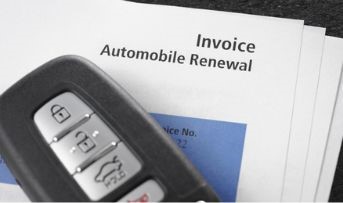
Here's all you need to know about a lapse in car insurance
Buying a car in India is seen as more than just a mode of convenient travel. It is seen as an investment and a status symbol too. In such pursuits, people spend way more on their vehicles than they should.
However, considering the income disparity, uncertainty of economic activity, and rising costs in the current scenario, purchasing such high-value assets without security is not feasible. This makes car insurance a necessity.
Despite the benefits of car insurance, there are several things a policyholder has to consider while going through the buying process. It is essential to remember the policy period and renew it before it lapses. Read on to learn all about a car insurance lapse.
What is a policy lapse?
Car insurance is an annual mandatory policy as per the Motor Vehicles Act 1988. The policy document needs to be renewed within the date mentioned, after which it becomes due and expires—failing to renew it before its expiry is called the lapse of a car insurance policy.
Need to prevent lapse.
A policyholder cannot claim damages incurred after the policy has lapsed since it is no longer valid. Such expenses have to be borne by the policyholder himself. Hence, to protect yourself from getting into such a situation, it is essential to renew your insurance before it lapses.
Effects of a lapse.
Apart from bearing the entire cost of damages by oneself, several other problems arise from allowing your car insurance to lapse, including:
1. Vehicles with lapsed insurance policies must undergo the inspection process, which is rather tedious and time-consuming.
2. After your policy lapses, the premium amount on your policy may be revised and will likely be greater than the amount you were previously paying.
3. Fines and penalties are often inescapable while renewing a lapsed motor insurance policy.
4. If you are found to be driving a car without valid insurance, you may have to shell out a fine of up to INR 2000 as per the present rules in case of your first offence. For repeat offenders, the penalty amount increases, and you may be imprisoned for up to 3 months.
5. Since your insurance is no longer valid, you lose out on the accumulated amount of the No Claim Bonus.
Renewing car insurance after lapse.
Depending on the duration after the lapse, you can proceed with the steps stated below:
1. Within the grace period: Insurance companies usually offer a grace period of up to 90 days post-lapse. If you renew your policy within this period, you may avoid paying additional fees altogether or only have to pay a nominal amount.
2. Post-grace period lapse: If the grace period window has passed, immediately contact your insurer. While some may still allow renewal, be prepared to purchase a new policy if your insurer rejects your request to renew the policy.
3. Post-permanent lapse: If it has been a long while since the expiry of the policy, including the grace period, purchasing a new car insurance policy is the only route remaining. It is inevitable to undergo a car inspection for this process. Ensure you keep track of the policy duration and expiry to prevent making the same error again.
Keeping track of minute details can be challenging amid hectic schedules. Therefore, insurers do their part by sending electronic notifications through texts or emails to alert you about the upcoming renewal of your car insurance. While it is an aid you can benefit from, it is ideal to set self-reminders or set up automatic payments with your bank to stay on top of all things related to car insurance.
Using effective self-reminding mechanisms makes avoiding the consequences of a car insurance lapse easy. Ensure that you compare policies and keep track of periods each time you renew your policy.
Click HERE to buy the best car insurance in India.
Disclaimer: The information provided above is for illustrative purposes only. To get more details, please refer to policy wordings and prospectus before purchasing a policy.

Effective tips to make your house a pet-friendly place
The joy of having a companion is truly unparalleled. While some are fortunate to have multiple family members, some adopt pets to count on as their extended family and sail through life's journey together. However, irrespective of the type of pet, it is a significant decision that requires tremendous planning, which comes with several responsibilities.
You must think carefully before getting a pet to ensure that you can provide an appropriate home environment which is safe and happy for it. Having a house insurance India provides personal belongings cover to keep your home safe from the shenanigans of your beloved pet.
Additionally, consider the following tips to pet-proof your home while making it a haven for your furry friend!
1. Inspect your flooring:
Carpets are a standard accessory in most households but and are an easy way to sweep things under the rug. However, for this very reason, they may be a terrible addition to homes with pets. They accumulate bacteria and pet hair, making the house dirty and a breeding ground for diseases. Hardwood floors or non-white tiles are alternatives that can keep your home looking clean and prevent the build-up of dander and fur.
2. Keep fragile items and antiques away:
Adopting a pet may seem like an activity with only fun involved until you see the sacrifices and additional effort required. Before you get your pet home, ensure that you stash away all your fragile and high-value items for the long term in high locations. This way, you can prevent the possibility of damages that are bound to happen as your restless pet explores its new surroundings.
3. Secure all electrical outlets:
Think of getting a pet as the same as welcoming a baby home. You must go through all the motions of baby-proofing the home to keep your bundle of joy- in this case, your pet, safe. Ensure all electrical gadgets are out of reach and all wirings are secured to prevent accidental shocks. Since pets are prone to chewing on all they can sink their teeth on, regularly inspect and secure any worn wiring.
4. Stock up on space separators:
Most effective when in their younger ages, blockades help keep your pet away from specific sections of your home where you cannot continuously supervise or where you wish to keep them away from. Ideally, section off areas where you have large machines like the washing machine or dangerous equipment like the kitchen or your bedroom if you wish to restrict pet access.
5. Get particular about cleanliness:
Pets are messy creatures. No training can eliminate their tendency to make a mess. Use lint rollers to get pet hair off furniture and periodically vacuum the floor to eradicate dirt and pet hair accumulation. Keep your indoor trash cans covered to prevent your pet from knocking them down and creating a more significant problem.
6. Make use of furniture covers:
Depending on your pet's activity levels and age, restricting its access to particular sections may be futile. Therefore, it may be better to use preventive accessories like furniture covers that protect your expensive sofas, lounge chairs, tables, and even bed covers when not in use.
7. Create an exclusive pet zone:
We often hoard items to maximise the space in our homes, leaving our pets with minimal space to stretch out. Ensure that you allocate a small area in your house for your pet to play without obstructions.
Before you welcome your pet, check the above parameters to provide it with a safe habitat. Buying house insurance India is a prudent move to cover financial losses that may occur to your shared home. Depending on its coverage, the policy may even cover pet damages to the house. We hope you have a wonderful time with your pet and enjoy seeing it grow.
Click HERE to buy the best house insurance India.
Disclaimer: The information provided above is for illustrative purposes only. To get more details, please refer to policy wordings and prospectus before purchasing a policy.

Everything you need to know about family floater health insurance plan
Due to the threat of a global pandemic and the surge of different health crises, everyone now should have health insurance. Health insurance coverage can significantly safeguard you and your family from medical expenses during an emergency. This occurrence can be erratic and unexpected, and to protect the family, you or your family can purchase health insurance individually. Or, it would help if you bought a family floater health insurance plan to offer comprehensive coverage to your loved ones.
What is a family health insurance floater plan?
A family floater plan is health insurance that allows your entire family to benefit from a single health plan. These plans cover every family member under one single umbrella policy. Also, they are cost-effective because only one premium payment is needed for all beneficiaries simultaneously.
What are the advantages of getting family floater health insurance?
One of the best things about buying family health insurance is that it covers people of different ages. Neither senior citizens nor even infants require you to have separate insurance coverage. Here are some of the more notable advantages.
1. The Convenience of policy selection:
A family health plan makes it simple to choose a policy that provides coverage for all beneficiaries at once. There is no need to manage the renewals of many policies for various family members or go through the process of shortlisting them all.
2. Adding new members:
Family health insurance policies generally provide maternity benefits. It is simple to add them and provide coverage for newborns and pregnant women. So, if you are planning to start a family soon, choosing a family floater health insurance plan with maternity benefits can be a good deal.
3. Reasonable premium:
Since single-family insurance covers the entire family, coordinating several policies and their renewal dates is optional. In addition, compared to standalone individual health policies, single coverage can be modified to meet beneficiary demands at an affordable cost. Using the online health insurance premium calculator, you can quickly calculate premiums.
What should you consider when buying a family floater health insurance policy?
There are other factors to consider when purchasing individual health insurance coverage. These rely on the individual needs of each family member. Here are some recommendations for choosing a family floater health insurance policy in India.
● Your policy's coverage:
There are various features that you can review before deciding on the final coverage. Coverage is the most important thing to consider when choosing one of these policies since it varies from one to the next.
● Your plan's adaptability:
You must choose supplemental coverage to cover specific age-related ailments. If you start a family, you might have to select maternity coverage. Keep this flexibility in mind when choosing a family floater health insurance.
● No-fuss experience with claims:
Choosing a plan with fewer documentation requirements and other benefits can help you receive a seamless claim experience even though the settlement process is largely the same across insurance companies. Consider a policy that has a high claim settlement record.
Now that you know the benefits and how to choose a family floater health insurance plan, use these helpful suggestions to have your family covered and enjoy the peace of mind you deserve. Addressing your entire family's medical needs may appear daunting, but with the proper knowledge and appropriate insurance coverage, you can get the best deal. Compare different policies online, and understand their clauses, premium, and benefits before making the final decision.
Click HERE to buy the best health insurance plan for your family.
Disclaimer: The information provided above is for illustrative purposes only. To get more details, please refer to policy wordings and prospectus before purchasing a policy.

Six things to check before you take new car delivery
Are you taking delivery of your new car? But do you know that there are some prerequisites before signing any papers? Suppose you discover a problem after driving your new car away from the dealership; there are chances your dealer may refuse to take responsibility.
To avoid such a situation and ensure that everything is in working order, set up a pre-delivery inspection checklist and do the due diligence. Also, before you hit the road, be sure you have adequate motor insurance coverage from the best motor insurance company in the event of an accident.
Following is a list of things to look for when you take delivery of your new car.
1. Exteriors of the car:
A car might get damaged while being transported from its manufacturer's facility to a dealership stockyard. Check for dents and scratches, paying particular attention to the bumpers and the sides. In addition, look at the paintwork and the finish. Bring any repaint spots, scratches, or dents to the dealer's attention as soon as you detect them.
2. Check the electrical components:
Inspect and test all of the vehicle's electrical components, such as the lights, power windows, in-car entertainment, and the instrument cluster. When an automobile is left in a stockyard for an extended period, rodents often chew through the wiring, resulting in costly repairs. Furthermore, the battery should not be too old. If it is, ask the salesperson for a copy of its warranty card.
3. Interiors of the car:
After completing the exterior inspection, check the vehicle's carpeting, seats, console, and glovebox. You may check to see any wetness in your carpet by taking off the floor mats. Also, inspect the glasses and mirrors for cracks or scratches.
4. Make sure the tyres are in good condition:
Ensure that the tyres are not older than the car by checking the manufacturing date. A hardened rubber compound in old tyres could reduce road traction and cause them to wear out faster than they should. Also, inspect the spare tyre to ensure it is correctly inflated. Then examine the toolkit to ensure that it contains all the necessary tools.
5. Make sure the A/C is working properly:
Turn on the air conditioning and check how quickly the interior cools down. Vehicles that are parked in the dealer stockyard for long accumulate dust. Dirty air ducts can lead to bacterial growth, which is harmful to human health.
6. Check the engine:
Keep an eye out for indicators of fluid leaks and a damaged engine cover under the bonnet. Examine the fluid levels in your vehicle to ensure that they are at the proper levels for your engine oil, coolant, braking fluid, and windscreen cleaning fluid, among others. Furthermore, the engine compartment should be free of dust and debris.
A brand-new car will rarely cause any difficulties during driving. However, when it comes to maintaining security, ensure that you get comprehensive insurance from the best motor insurance company. Compare different motor insurance plans and select the one that provides you maximum benefits and the best premium. And yes, always take the delivery of your new car in the daylight because you will be able to spot defects, scratches or repair work, if any.
Click HERE to buy insurance from the best motor insurance company.
Disclaimer: The information provided above is for illustrative purposes only. To get more details, please refer to policy wordings and prospectus before purchasing a policy.

Five effective tips for lorry drivers to have safe nighttime trips
Driving a lorry at night can have several advantages, including reduced traffic, availability of parking spots, and a magnificent night sky. While nighttime lorry driving may be relaxing, it is critical to practice safe night driving to avoid mishaps. According to the Ministry of Road Transport & Highways of India, road deaths increase three folds at night.
As human eyes have poor night vision, with decreased depth perception and peripheral vision, it is no coincidence that the highways are dreadful and dangerous after the sun sets.
The best safety tip would be to not drive after dark, but if your schedule mandates you to do so, here are some tips that will help keep you safe on the roads.
1. Adjust the headlights:
Check that your lorry's headlights are correctly set. When it's dark, use upper beams whenever it's safe to do so. Uppers beams can see twice as far ahead as dipper. Switch back to dipper when you're within 500 feet of an oncoming vehicle.
2. Follow speed limits:
It's a fundamental reality that humans can't see as clearly during the night as in the daytime, no matter how excellent their vision is. So, driving slow at night helps you see the warning signs or other vehicles better. Slow down even more during severe weather and foggy conditions due to less visibility.
3. Reduce glare:
Maintaining a clean windshield is vital to reduce the blindness that an approaching vehicle's headlights may cause. Furthermore, replace your wiper blades regularly to maintain a clean windshield.
*Additional tip – Staring at an approaching vehicle's beams can slow your response time. When you see such lights, gaze toward the center or right side of the highway until traffic passes. Moreover, adjust your mirrors so that headlights from vehicles behind you do not blind you.
4. Beware of your limitations:
As per the Ministry of Road Transport & Highways of India, most police-reported truck collisions are caused by sleepy driving each year. Aim for at least seven hours of sleep before you get behind the wheels. If you ever start experiencing fatigue, pull over right away and rest or refresh.
5. Be responsible:
Do what you expect of others, don't use upper beams unnecessarily, don't drink and drive, always use your side indicators while driving, flash your lights before overtaking, etc. Remember, even a small thing can trigger a severe collision and lead to an accident, so be a responsible driver.
Additional Tips:
• Maintain the health of your truck by carrying a routine maintenance
• Cover the truck with motor insurance. You can also buy motor insurance online now
• Overloading is illegal as well as causes much trouble while driving
• Never forget to wear your seatbelt
• Turn on the mp3 player to avoid feeling drowsy but ensure you don't keep the volume too loud as it might prevent you from listening to the vehicles outside
• Take periodic refreshments breaks
Whether you're a novice or an expert, the roads are uncertain. As we earlier said, the best tip is to drive during the daytime, but if night driving is inevitable, these tips will surely benefit you in driving safely.
Visit HERE to buy motor insurance online now.
Disclaimer: The information provided above is for illustrative purposes only. To get more details, please refer to policy wordings and prospectus before purchasing a policy.

Follow these effective tips to keep your asthma under control
Asthma is a health ailment that can take a severe toll on your health. In this condition, the air passage observes inflammation, and the bronchioles of the lungs swell, making it difficult to breathe. Asthma affects the functioning of your lungs and can lead to various long-term diseases as well.
While you can control asthma most of the time, it can affect your daily activities and may even be fatal. If not addressed correctly, the symptoms can worsen over time and lead to severe asthma attacks.
Today we will look at a few ways you can control your asthma.
1. Identifying triggers:
Almost all cases of asthmatic attacks arise due to a triggering agent or underlying factors. It could be pollution, smoke, allergies, exercise etc. Identifying what triggers your asthma is essential to prevent attacks as much as possible. One handy way of doing this is by keeping notes for a few weeks. Take into account all environmental and emotional things that affect you.
2. Avoid allergens:
Once diagnosed with asthma, you can do allergy tests to learn what you are allergic to. A comprehensive understanding of what causes allergies can help you prevent them in the future. Contact with allergens can cause inflammation which may block your airway and worsen your condition due to poor respiration.
3. Immunotherapy:
Immunotherapy or Allergy shots are injected to help mitigate allergic symptoms. Over a period of time, these small doses of specific substances allow the body to adjust to them and become less reactive in the future.
4. Avoid smoke:
If you are asthmatic, you should avoid smoke from vehicles, incense sticks, and cigarettes. Even passive smoking can be a deadly trigger for your asthma. Always carry masks, inhalers, and your asthma medication wherever you go. When stuck in situations where you're unable to avoid the smoke, use masks to cover your face thoroughly. Protecting your air passage should be a priority when you're in crowded places.
5. Take medications:
Even if your asthma has been under control for a while, never skip your medications. Asthma medications are designed to help to prevent symptoms and attacks over time. Skipping on your medications can be dangerous.
6. Keep your environment clean:
Sometimes the bare minimum can go a long way. Regularly vacuuming your couches and floor can help keep dust at bay. Use a dehumidifier to reduce the air's moisture and prevent mold growth. Install air purifiers to get rid of dust mites. Lastly, don't forget to change your bedsheets and liner every week to ensure maximum protection from dust and allergies.
These are a few ways in which you can prevent an asthmatic attack. However, in case of a severe asthma condition, it is advisable to visit a doctor. Having medical reports handy at all times is a good idea to give the doctors a better understanding of your medical history.
We are often not prepared for the expenses we might incur during visits to doctors. Costly medical bills should be the least of your worries in such times. Having the backing of an insurance provider is especially helpful. Consider this a reminder of your health insurance policy renewal and prevent it from lapsing.
Click HERE to know more about health insurance policy renewal.
Disclaimer: The information provided above is for illustrative purposes only. To get more details, please refer to policy wordings and prospectus before purchasing a policy.

Let's understand the risks of driving overloaded trucks
India's vast network of national highways is usually busy with trucks carrying hefty cargo across the states. Transportation of heavy-duty materials and goods is majorly carried out by trucks. Their labour happens to be an essential work that contributes to the entire country's economy and aids multiple industries in flourishing and growing.
As essential as the transportation of the loaded cargo is, it can be a complex process to manage. Hauling loaded shipments for kilometers at a stretch is a strenuous activity and can become dangerous. Due to their massive size and load, several rules and regulations are levied upon the lorries. There are standard weight limitations to be followed to avoid any road accidents. All shipment companies and truck drivers must follow these safety provisions.
What are the basic truck requirements to keep in mind?
1. The weight of the load or cargo must be evenly positioned in the vehicle. Distributing the weight evenly throughout the truck ensures that its balance is maintained while driving. It also guarantees that no part of the truck is heavier than the rest so that it drives safely across the distance.
2. The cargo must be positioned and secured firmly in its place. If any items of the shipment move with the truck's movement along the road, it can cause the lorry to tip over or fall while making a turn. This can cause major road accidents and distract the driver from driving.
3. The regulatory bodies imply a standard weight limitation depending on the truck's size. The driver must ensure that these weight limitations and norms are adhered to before setting off on their journey. Not only can they be heavily fined for disregarding these rules, but they can also cause significant weight displacement of the vehicle, leading to severe accidents.
What are the risks of overloading the trucks?
1. The mechanical components of the truck are proportional to its smooth functioning. The weight limits are placed to protect the vehicle's mechanical parts from the damage caused by overloading. Parts like the suspension and engine can be easily damaged.
2. Heavy loads cause high amounts of pressure on the vehicle's braking system. The driver is forced to push harder on the brakes to stop sooner, impairing the system. Extreme pressure on the brakes can significantly increase the possibilities of brake failure.
3. Like the truck's mechanical parts, tyres can also deteriorate due to truck overloading. It causes a significant chance of them blowing out. A tyre blowout can cause the cargo to shift, displace its weight and lead to accidents. If the driver is unable to steer the truck to safely move out of the road, it may cause a major road collision and pose a threat to other vehicles on the road.
Understanding the risks of overloading trucks is essential to securing yourself, people, and vehicles. Following the safety protocols and driving with alertness and lesser (permissible) load is key to avoiding landing into unwanted mishaps. Investing in a motor insurance scheme can ensure your truck's safety at all times and get you compensated in case of damages. A good motor insurance can help you secure your finances and make your journeys stress-free.
Click HERE to buy motor insurance to safeguard your truck.
Disclaimer: The information provided above is for illustrative purposes only. To get more details, please refer to policy wordings and prospectus before purchasing a policy.

How social media is affecting your mental health
With the internet being easily accessible even in remote areas, today, people engage and entertain more through the digital world. Social media is proving to be a significant source of entertainment worldwide. However, it turns out that it is also one of the rising causes of bad mental health. Primarily, the rise of social media has long-term consequences and adverse effects on people's mental health, including cyberbullying, depression, and severe anxiety.
People think that social media is a mood booster, which is true but under certain limits. Excessive socializing can make things odd for you, majorly affecting your mental peace. Let's take a look at how social media is affecting people's mental health.
1. Comparing our lives with others:
The comparison is one of the primary reasons why people feel socially isolated. As we scroll down our social media feeds, we start comparing our lives with other people. This may be in terms of money, their day-to-day activities, looks, or happy moments. Unfortunately, the habit of comparing ourselves to others is linked with symptoms like anxiety, depression and loneliness.
2. It triggers sadness:
The more you use social media, the higher it triggers your sadness. For example, a person already dealing with mental health issues may see things that can make her feel down. This way, people feel the fear of missing out, leading to higher anxiety.
3. Low self-esteem:
People on social media are all about showing off materialistic things. We tend to feel excluded from these show-offs, which can lead to higher insecurities. Seeing someone ‘perfect’ on social media further lowers self-esteem. You'll begin to judge your self-worth, and that's dangerous.
4. Social acceptance:
Social media has taken over people's minds by its craze for ‘followers’ and ‘likes’. Youth indulge in the thoughts that if they don't get a certain number of likes or followers, they are probably not good enough or aren't socially acceptable.
5. Abrupt sleep cycle:
Social media is like that one toxic addiction you want to leave, but you can’t. According to research, almost two-thirds of the youth check their social media at least once before sleeping. Sometimes you may come across a specific post, and you decide to check about them more out of curiosity. Within a blink of an eye, you'll lose hours just scrolling on social media.
6. Leads to jealousy:
Besides comparing ourselves to others, another way social media affects one's mental health is by inducing jealousy. Seeing other people's success stories, luxurious accessories, and vacations can be envy-inducing. This vicious cycle of jealousy can lead to severe consequences.
The rise in the influencer culture has further brought plenty of side effects on today's youth. Unfortunately, draining mental health can affect one's physical health too. While these health problems may not look concerning, they can turn out more significant and take a toll on your overall well-being, productivity and finances in the future. Therefore, it is in your best interest to get HEALTH INSURANCE so you do not drain yourself financially to protect your mental well-being.
Social media is not just scrolling feeds and looking at what's going on in other people's lives. If you use it wisely, social media is a perfect medium to make you productive and happy. You will find profiles and posts related to improving your well-being, practising mindfulness, drawing positivity through education, and even the importance of mental balance, health insurance and a perfect lifestyle.
Click HERE to buy the best health insurance that fits your needs.
Disclaimer: The information provided above is for illustrative purposes only. To get more details, please refer to policy wordings and prospectus before purchasing a policy.

Work From Home (WFH) culture: Revealing the truth
The year 2020 was considered the year of WFH (work from home). In the beginning, everyone took it as a blessing, and people experienced enough flexibility at work and more time for family. However, as the trend continued into 2021, it presented new communication and collaboration challenges among teams, mental health issues, and imbalance in the work-life cycle.
Working from home looks like a job incentive for many employees, as suddenly they have more flexibility to get their work-life balance. But that's not the whole truth; reality seems to be different. Work from home culture has depended significantly on one question: Is remote working a sustainable option? In this article, we'll discuss some of the most common challenges that home-based workers are facing.
WFH affects your mental health:
Though work from home has proved to be helpful, it is also adversely affecting our mental health. A report states that about 76% of the global workforce recorded negative impacts on their mental health in 2020 due to WFH.
WFH results in total exposure to the computer all day, leading to headaches, fatigue, tiredness, and eye problems. In addition, rather than the benefits of work-life balance, some people lose sleep due to workload and family chores altogether. This continuous work-family adjustment results in emotional exhaustion. People who are hyperactive at work find it hard to detach themselves from work at home.
On the other hand, work from home has turned out to be an advantage for many introverts. You can work from the convenience of your customary conditions without any physical human interaction.
WFH takes a toll on physical health:
Because you are in front of the screens all day, there is no time for physical activities. Due to prolonged remote working hours, people are more often facing health issues. A sedentary lifestyle, irregular food intake, and sleep deprivation are common concerns. Parents working full time, taking care of household chores, and home-schooling their kids face much bigger physical health issues.
Tossing within the many tasks simultaneously; it takes the life out of those employees with productivity shame, lack of motivation and burnouts in most cases. Most surveys suggest that as many as 50% of people have back and neck pain and other musculoskeletal problems leading to more stress. Although the pandemic has blurred the boundaries between work and home, we learned a lot from WFH culture. These alarming health-related issues have brought well-being to the forefront. Both employers and workers are more aware than ever of the impact of mental and physical health.
We all know that stress and fatigue are not just resulting in some temporary problems but are also impacting cognitive health with some life-threatening issues such as anxiety, diabetes, heart diseases, and clinical depression. As a result, the corporate sector is taking measures to ensure the well-being of the employees and assuring better working conditions, flexibility and HEALTH INSURANCE coverage to their employees.
Since WFH impacts your overall well-being, re-think your current remote working style. There are undeniable benefits of work from home if you have a positive WFH culture, flexibility, work-home balance, time for other activities and a health insurance plan to address your mental and financial stress. So go, set in motion the true meaning of WFH!
To get the best deals on health insurance, click HERE .
Disclaimer: The information provided above is for illustrative purposes only. To get more details, please refer to policy wordings and prospectus before purchasing a policy.

Here's a guide to help you start your bike rental business
'Big business starts small' – wise words by Richard Branson. If you plan to become your boss, a bike rental business can be a good venture. A rental bike allows people to ditch cars and public transport without owning a motorcycle or being bothered by BIKE INSURANCE, storage, and maintenance hassles.
In recent years, the opportunities and demands for a bike rental business have increased considerably due to the convenience of two-wheelers. With just a helmet and a 2-wheeler, a person can go around the city efficiently running their errands; or take in some fresh air on an empty highway.
Now that you are ready with your business idea let's proceed to the next step. We have brought together these seven easy steps to help you start your bike rental business.
Step 1
Plan – 'A target to accomplish without a plan is just a dream!'
• Estimation of setting up your business
• The business operation cost
• Potential customers (set up the target audience and promotion offer accordingly)
• Method of business (hourly or daily rates, whether or not you will sell bike-related merchandise, policies concerning damage caused, etc.)
• More profits (consider extra services, like bike sales and repairs; if in a tourist place, offer tour guides)
• Name of your business (what's there in the name? Your brand, logo, website, etc.)
Step 2
Tax – 'Pay for doing the right thing!'
Register for taxes; your small business will be taxed depending upon your business structure (e.g., LLC or Sole Proprietorship.)
Step 3
Bank accounts and credit cards – 'Start your financial journey!'
A business bank account separates your assets from your company's assets. Similarly, getting a business credit card will help you separate your business and personal expenses, and it builds your company's credit history, allowing you to acquire your investments later.
Step 4
Daily cash flow and expenses – 'Maintain a proper business account!'
Keeping track of various expenses and income is crucial to understand financial performance. It also simplifies the tax filing for you. Carefully manage the cash flow, make all entries and maintain a daily account sheet.
Step 5
Legal requirements – ‘Keep the books clean!’
Get your company’s name registered, obtain GST, PAN card, trademark certificate, and other prerequisite licenses and permits to avoid any fines or legal issues in the future.
Step 6
Insurance – 'Keep your umbrellas ready before it rains!'
Similarly, for your firm's financial security, it is necessary to get the right business insurance. There are several types of insurance policies designed to cover different risks. For the growth of a bike rental business, the security of bikes makes a huge difference. With the rising operation cost of the bike rental business, having robust bike insurance plans helps you overcome financial risks related to your bikes.
Step 7
Move online – 'Make the internet your new market!'
Maintaining a good website and the social media platforms like LinkedIn, Facebook and Instagram will help your business to grow with more user engagement. In addition, you can flash special offers, exclusive deals, trade merchandise as a part of your marketing strategy to draw more sales.
For running a bike rental business, you need to have mechanical skills or hire at least one full-time mechanic. Remember, a nonoperating bike won't earn you any money. Also, a significant amount of your customers can be tourists, so you should be well acquainted with the location to build a good customer relationship. Follow your passion and work in the direction of making your vision a reality with this quick guide.
Are you starting a new bike rental business? Click HERE to buy insurance that will ensure the safety of your bikes.
Disclaimer: The information provided above is for illustrative purposes only. To get more details, please refer to policy wordings and prospectus before purchasing a policy.

Eleven good habits every two-wheeler rider should follow
The two-wheeler segment is considered the most convenient mode of commutation in our country. It is believed that 'life is better on two wheels.' With a couple of benefits like fuel efficiency, compact design, and budget-friendliness, two-wheelers are people's personal favourite to withstand the fast pace of life. From youths to retirees, you will find a large Indian population riding two-wheelers.
Despite many worthy features, two-wheelers elevate the risk involved in riding them. No matter how good your driving skills are, you can't deny the risks involved with two-wheelers. Unfortunately, people tend to overlook it while riding two-wheelers. Following traffic and safety rules is essential even if you have many years of experience under your belt. In addition, pursue another good habit of renewing your 2 WHEELER INSURANCE to ensure security in case of mishaps.
We bring these eleven good habits every rider should consider:
1. Start your two-wheeler only after wearing the helmet. It is unlawful and dangerous to ride a two-wheeler or a bike without wearing a proper helmet. The helmet should be ISI certified and of the best fit.
2. Always go for a bike that you can comfortably ride and control. Choose one that is appropriate for your physical capabilities, low maintenance, and compliments your budget.
3. Overtaking a vehicle from the left is always the wrong decision you'd ever make. Stay away from overtaking at intersections, schools and public zones, bridges. Honk before you take a turn.
4. The rider must be visible to other vehicles during the night and extreme weather conditions like fog. Stick reflective bands on the helmet, use dipper lights appropriately, especially when riding at night.
5. Riders must be cautious of their proximity to the vehicles ahead of them. Understand the distance required to go to a complete halt and brake correspondingly.
6. Maintain your motorcycle or scooter in excellent working condition and get regular servicing at an authorized workshop or service centre.
7. Always look out and be aware of potential dangers such as speed bumps, potholes, environmental disasters, and pedestrian crosswalks.
8. Obey all traffic rules religiously. Always signal first so that others can anticipate your next action. Make sure you don't slam on the brakes or make sharp bends suddenly.
9. Using your phone on the bike is a big threat for the rider and the pillion rider. If it is exceptionally urgent, pull over your bike at the side of the road to use your phone.
10. Only because you own a vehicle does not make you superior on the road. Be considerate of pedestrians and allow them to move before you in all situations.
11. In addition, an overall increase in service cost, maintenance fee, or a sudden accident may impact your financial plan. So, prepare for uncertainties in advance with 2 wheeler insurance.
2 wheeler insurance will not just cover your finances at times of damage but will also provide you with compensation if your two-wheeler is stolen.
Keep the above-mentioned habits in mind and enjoy the pleasure of a bike ride to chase more smiles per hour.
Looking for 2 wheeler insurance, click HERE.
Disclaimer: The information provided above is for illustrative purposes only. To get more details, please refer to policy wordings and prospectus before purchasing a policy.
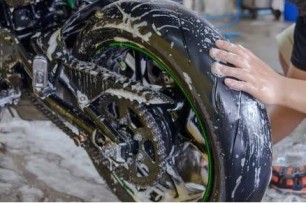
With these five tips, you can give your bike tyres a long life
Bikes are the most commonly used vehicle when it comes to riding on India's busy roads. But did you know that your safety relies on one more thing than just your driving skills? Your choice of tyres and how you maintain them are two major factors contributing to a safe and smooth ride.
Still, most of us don't take the health of our bike's tyres very seriously. Tyres suffer a lot while making your riding experience pleasant. Besides this, bike tyres face significant external damage and develop cracks due to constant wear and tear. You cannot afford to leave the tyres unattended because a faulty tyre can be a threat to your life and others around you. Below are the five best tips to increase the life expectancy of your bike's tyres.
1. Wash them regularly:
Cleaning the tyres of your bike is an essential routine that you shouldn't miss. Leaving dirt will expose them to damages, thereby affecting their quality. The dirt racks up on the tyre's surface and affects its grip, which tends the bike to skid on the road. So, next time you go to the washing centre, get the tyres clean and dirt-free thoroughly.
2. Schedule regular repair checks:
Your bike runs over any sharp object like a nail or edgy stones on the road. With time, tyres also meet with alignment and wheel balancing issues. This happens due to extensive riding and wear and tear of treads or grooves. Get these issues fixed at the earliest, as otherwise, such things can damage the tyres inside out.
3. Get the best fit:
Sometimes we opt for fancy or trendy tyres and don't pay heed to the actual requirement. Always look out for the best fitting and necessity of your bike and its model. Mismatching tyres is never a good option – neither for your bike nor for you.
4. Timely replacement of tyres:
Tyres don't come with a lifelong guarantee. Ideally, they need to be changed every 4-5 years, or the kilometres you cover, depending on your bike's specifications. Due to resisting the friction continuously, tyres tend to lose their grip. Taking out your motorcycle with such tyres on the road is dangerous, especially on uneven roads or during the rainy season. So, timely replacing of tyres is required before the situation gets uncontrollable.
5. Check for ideal pressure:
Refer to the user manual of your bike to know the perfect pressure of the tyre and maintain it consistently. Don't forget the essential maintenance of air filling and oiling the engine. Riding under less pressured tyres is risky as there are chances of bursting or unexpected puncturing.
Your bike is your responsibility, and keeping it in good shape will give it an extended life. Moreover, regular maintenance to your bike and tyres promises comfortable and safe rides to you. Along with good care, buying suitable BIKE INSURANCE also counts as a wise step. Bike insurance comes with plenty of benefits that can help you as an owner during unfortunate incidents like accidents, theft, or damages due to calamities.
Click HERE to buy or renew your bike insurance online.
Disclaimer: The information provided above is for illustrative purposes only. To get more details, please refer to policy wordings and prospectus before purchasing a policy.

Is it a good option to plan long-distance tours on your commuter bike
How often have we dreamt of going on a perfect road trip with friends? Most people prefer to take cars or SUVs for road trips, but many biker gangs tell us about the fantastic opportunities you can come across while touring the country on a bike.
On a motorcycle trip, you interact with the local community more closely, navigate treacherous roads more efficiently, and skip traffic jams. But all said and done, not everybody has access to fancy bikes that are meant for long trips. The question remains, do you need to compromise on the thrills of life just because you do not have a certain kind of bike? Not at all!
In this article, we will examine why commuter bikes can also be used on long road trips and the few things you need to remember before taking your bike out.
1. Riding:
The time and the distance covered plays an important role in long road trips. It is easier to maintain a high speed in higher capacity bikes, whereas in lower capacity bikes, the engine starts to sputter beyond a speeding limit.
If you intend to take a commuter bike on a trip, it is best to stick to a speed that does not force your engine and the body to shake vigorously. Remember to increase the acceleration and use breaks smoothly whenever required.
2. Braking:
It is challenging to maintain a standard speed when you have open and empty roads ahead of you. But it is important to remember that standard bikes have different braking efficiency than superior motorbikes. Maintaining a tunnel vision and keeping track of everything ahead will help you in these conditions to use brakes efficiently.
Also, maintain a significant distance between your vehicle and the vehicle ahead of you. So, in situations where you are required to brake suddenly, you have ample time to avoid crashing.
3. Clothing:
Irrespective of the bike you ride, it is best to wear appropriate clothing to avoid injuries and bruises in case of accidents or crashes. A good quality helmet with a clear visor, riding boots, and gloves are essential parts of your bike accessories. Throw in a pair of knee guards and armour jackets for added protection.
4. Maintenance:
Before taking that much-awaited road trip, it is important to keep yourself and your bike in healthy condition. Do not forget to take your bike to an expert to get it checked for any defects and faults. Remember to check your bike's braking system, spark plugs, and engine efficiency before taking it out on a ride. Also, carry essential medicines and lots of water to avoid fatigue and lethargy.
These are a list of a few things that you need to remember while taking your commuter bike on a road trip. With regular maintenance and caution, remember that your commuter bike is a trustworthy option if you want to travel and explore more.
Even though they might have a low-power engine, with the right handling and proper planning, you can surely enjoy a memorable long trip with your commuter bike. To add more value to your bikes, do not forget to invest in Bike Insurance Online to safeguard yourself against any expenses you might incur in repairs or accidents.
Click HERE to buy bike insurance online.
Disclaimer: The information provided above is for illustrative purposes only. To get more details, please refer to policy wordings and prospectus before purchasing a policy.

Important things to remember if hitchhiking someone in your car
Hitchhiking is not as common in India as in other western countries. Thanks to the rising safety issues and the constant reminders from our mothers on why we should not talk to strangers, hitchhiking or offering a ride to strangers is an alien concept. However, over the years, we have seen a hitchhiking trend among young travellers to save some money. But how safe is it to offer a ride to strangers? What are the things to look out for when hitchhiking someone? If these are some of the questions you have when you think of hitchhiking, then this article might be able to help you with those.
Here, we will look at some safety measures to ensure your safety in situations like these.
1. IDs and bags:
If someone has asked you for a ride and you want to help them, then the first thing to do is to check their IDs. Crack open the window slightly and take a picture of their ID on your phone. If they have bags or carry-ons, ask them to place them in the boot space with their ID in the bag. Ensuring they are empty-handed while sitting inside the car makes you less susceptible to attacks and robbery.
2. Show pockets:
Ask the hitchhiker to empty the pockets before entering the car. This way, you can ensure that the person is not carrying knives, scissors, or other equipment that can be used to attack or steal from you.
3. Keep them in your range of vision:
Never let them take the back seat. You must keep them seated where you have a clear vision of their actions. This is a crucial point to remember to ensure your safety.
4. Do not take food from them:
If they offer you food or drinks on the way, do not eat them. These can be quickly spiked using drugs that do not alter the taste of the food. Narcotics and sedatives can be used to make you unconscious. This is the leading cause of car theft in this country.
5. Do not hitchhike a group:
If you are driving alone, it is best to hitchhike solo hitchhikers. That way, even in an attack, you will need to worry about handling a single person.
6. Always be alert:
This is a no-brainer. If you want to help out a stranger, you have to be prepared for the dangers you might face. Always keep pepper spray and other tools that, when used, give you ample time to escape.
7. Do not hitchhike in new locations:
It is best to avoid getting strangers on board if you are a tourist. This is a common way of scamming people for money and other belongings. If you are new to a place, you might not be able to get immediate help and can also be unaware of escape routes.
If you want to hitchhike someone in your car, you need to keep these things in mind. Remember that not everybody is a thief or a fraud. Hitchhiking is an efficient way to cut costs while travelling, and youngsters depend heavily on hitchhiking to commute between places. Sometimes people need genuine help. If possible, provide food and water to roadside hitchhikers and call for help if you can.
On that note, take essential steps to safeguard yourself and your car against theft and vandalism and invest in a Car Insurance policy. If you do not have these essential add-ons, consider getting them during your next car insurance renewal.
Click HERE for car insurance renewal.
Disclaimer: The information provided above is for illustrative purposes only. To get more details, please refer to policy wordings and prospectus before purchasing a policy.

Is personalising your car a good idea
Personalisation is a key to reaching the customers' hearts in the current times. Every brand has been trying to create its products with options to add a personalised touch for the consumers to feel like their own. The entire marketing world has been trying to come up with ways in which they can win this race and convert more customers to purchase their products and keep coming back for more. Personalisation, as a critical factor in today's customers' buying patterns, has a considerable influence and can change the game in the market.
We can comprehend personalised touch in small products like clothing, accessories, soft toys, sports kits, skincare items, and much more. But, can you add this unique touch to your car? Are such options available in the market? Are these choices limited? Are you someone who is looking for the answers to these questions and perhaps some more information on the same?
This blog answers all these questions about personalising your car and whether it is a good idea. Let's get started.
1. Number plates: yay or nay?
Customers pay extra money selecting a unique number to add that personalised touch to the vehicle. And this personal number will help you fetch a good deal as it amps up your car's resale value when you want to switch to another vehicle and close an agreement on the car you currently own.
On the plus side, a personalised number will make you part of the cool collector's club in the world of cars. It creates a "connoisseur of cars" persona for you as well.
2. Increases the level of safety while driving.
Adding a personal touch to your car requires a massive investment of money. The amount of money you spend depends on the features of your vehicle you want to modify and the accessibility of the tools, among other factors involved here.
But since you spend quite a large amount of money, you try to protect your car against any damages. This leads to you making mindful choices on the road, including taking extra safety measures while driving, ensuring that you obey the traffic rules even in urgent times, and avoiding any "road rage" type of scenario.
You can customise your mirrors to lessen the chances of blind spots in your vehicle while driving. You can get a complete view of your car's positioning and the vehicles near you if you decide to get a 180-degree mirror.
3. Upgrade the entire look.
You can get High-Intensity Discharge (HID) headlamps for your car, which would help you upgrade the look of your vehicle and come in very handy by improving the visibility when you are out on the road during the nighttime.
These HID headlamps work with a light temperature and emit subtle blue light, which elevates the look of your car. The blue light not only looks attractive and complements the car's exterior but has been proven easy on the eyes and does not blind the driver coming from the opposite direction.
Speaking of investing money into upgrading the look of your vehicle with the help of personalisation, you also need to ensure that you protect your car against damages. Not all accidents come with a warning and are your fault. But you must ensure that you wouldn't want to get involved in such chaotic situations.
You must have car insurance to stay stress-free financially and focus on resolving the situation if you end up in one. Explore all your options, check in with your current insurance provider, and Buy New Car Insurance which caters to your needs in the best ways possible.
Click HERE to learn more about how you can buy new car insurance.
Disclaimer: The information provided above is for illustrative purposes only. To get more details, please refer to policy wordings and prospectus before purchasing a policy.

Let's understand the evolution of two-wheelers in India
Two-wheelers have been around for decades. Almost every average family in the country owns a two-wheeler which they use to run errands. The purpose of the two-wheeler depends on several circumstances and the motive of the commute. Two-wheelers are the most popular personal transportation services and fall into the affordable category. The prices increase depending on the type of the two-wheeler, its purpose, and its features.
But have you ever thought about the history of these vehicles and how they grew so prevalent in our country? How did they first come into circulation? Well, we will sail you through the evolution of two-wheelers in India through this blog.
1. What was the purpose of two-wheelers?
The two-wheelers were developed to provide people with a safe and convenient option for smooth rides. They have evolved over the years, and we now have bikes that range in lakhs with multiple fancy features, a dream of every bike fanatic. Now let's take a road down memory lane and revisit the evolution of two-wheelers in India.
2. The era of vintage bikes.
We all know the brands that manufacture classic and vintage-style bikes. Apart from being known for their royal appearance and elegance, these bikes represent a class apart from how they steal the show in the market. It was the year 1902 when a single-cylinder engine motorcycle was sold first time in India. Purchasing or owning a bike of this category used to express a solid and respectable financial status and background, rather than just being considered a bike used for everyday purposes.
3. What happened after the classic bikes became old news?
The market welcomed other two-wheeler brands which manufactured these noisy bikes that would leave their impressions behind by the loud sound of their silencers or by the whiffs of smoke released. The era of scooters came in as these bikes became popular.
The design, the efficiency, and how it differed from the widely popular bikes ignited its charm. The popularity of scooters escalated beyond expectations in the 70s till the late 80s, and there used to be a waiting period for the purchase! The crazy high prices of the scooters did not discourage the people from waiting for an extended period to bring them home.
4. Welcoming other foreign brands.
At the beginning of the '80s, India became a popular destination for various foreign brands to make their sale. The two-wheeler industry formulated partnerships with these brands to bring them to India at a cost affordable to the Indian audience. The collaboration with these companies grew exponentially, with the foreign brand names becoming a standard of every Indian household.
Today, the bike industry has diversified, from comfortable tourers to compact city bikes and from fuel-efficient to race engines.
Some more informative pointers to understanding the evolution of two-wheelers in India include how these landmark bikes and other categories became a reference model for the other brands' style, design, and comfort patterns. Now, we are heading into the era where electric two-wheelers are no more a concept but a reality!
Quite interesting to visit how two-wheelers in India became widely popular. And while we revisit the timeline of these developments, you need to be aware of how crucial it is to safeguard your two-wheeler. Being a bike owner feels fantastic, but living your responsibilities as the owner is paramount.
You must hold yourself accountable to maintain your bike's best shape. This can be possible with the help of two wheeler insurance.
Take your search online, and find the Best Two Wheeler Insurance India to buy coverage that keeps your asset safe and sound. Invest in a policy that ensures the best returns and an efficient claim settlement process.
Click HERE to know more about the benefits of buying the best two wheeler insurance India.
Disclaimer: The information provided above is for illustrative purposes only. To get more details, please refer to policy wordings and prospectus before purchasing a policy.


